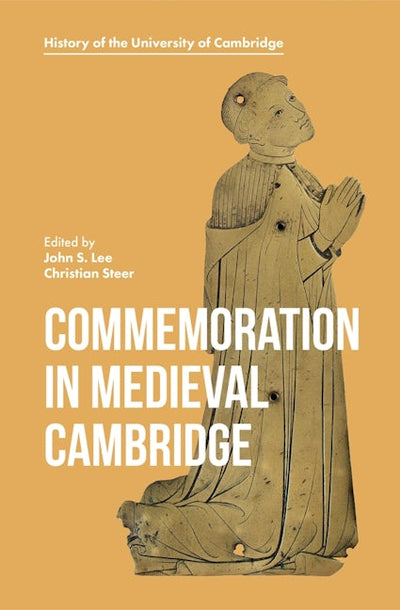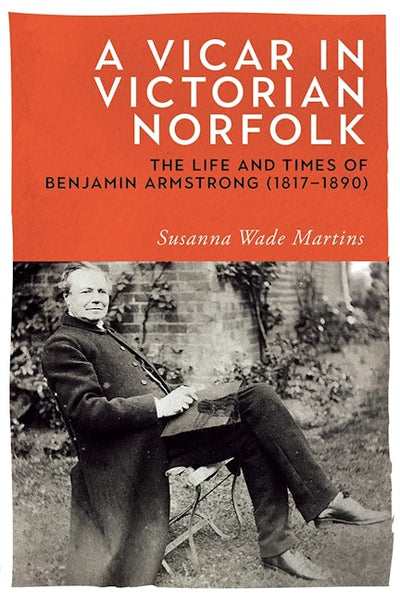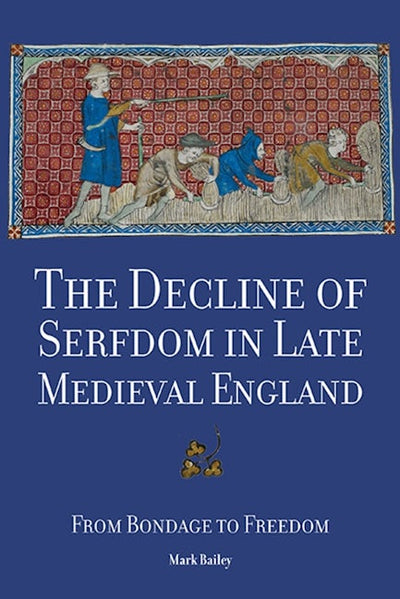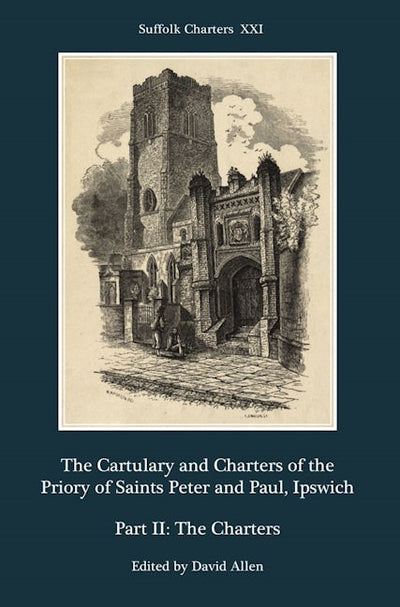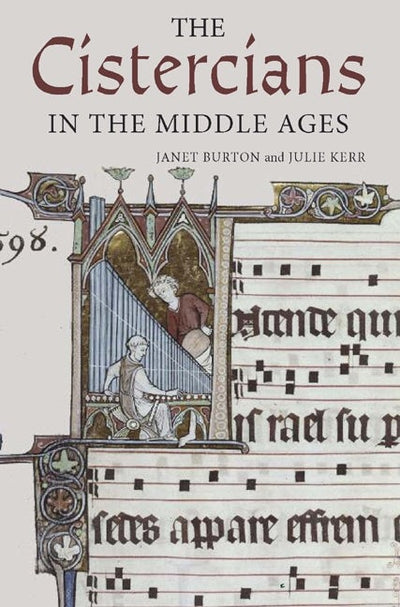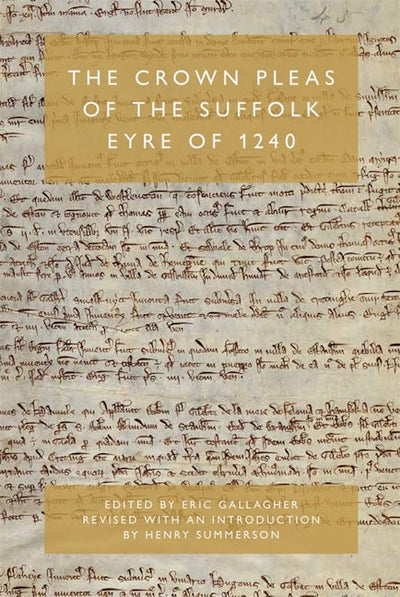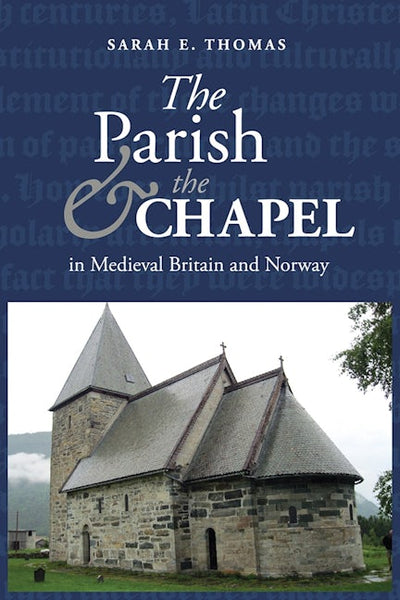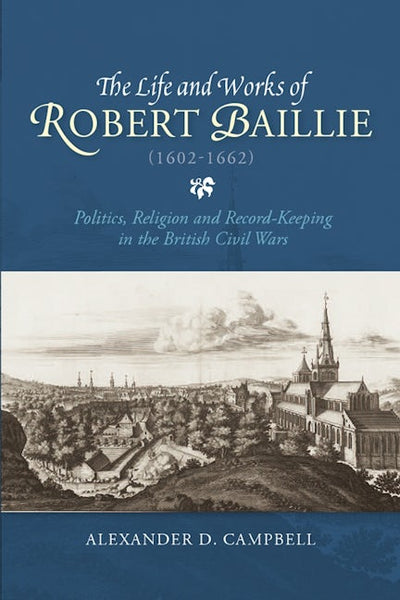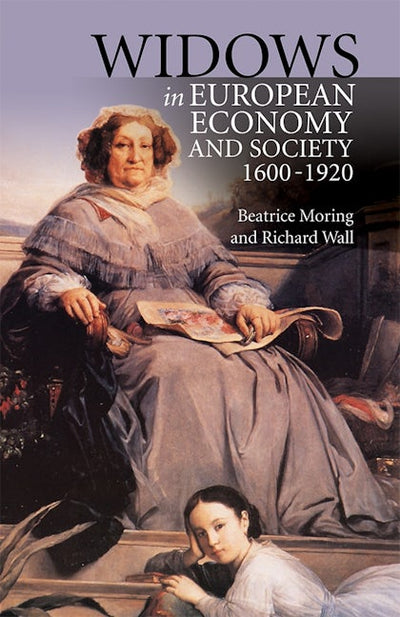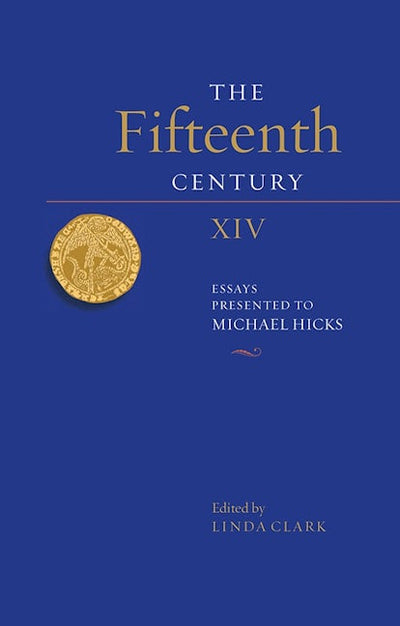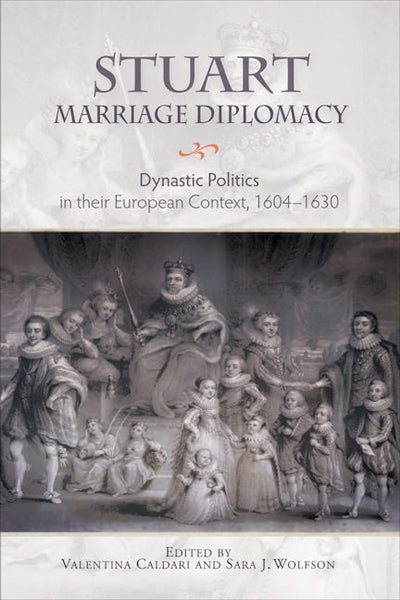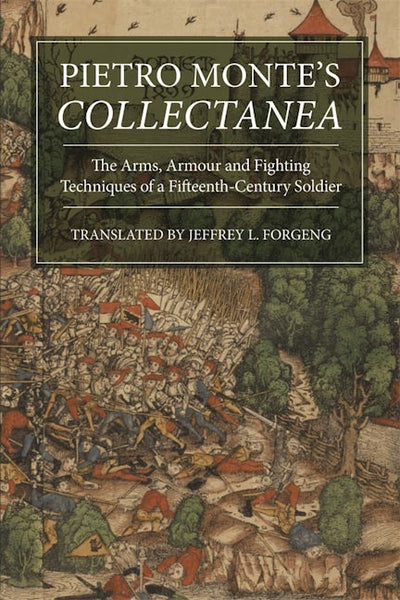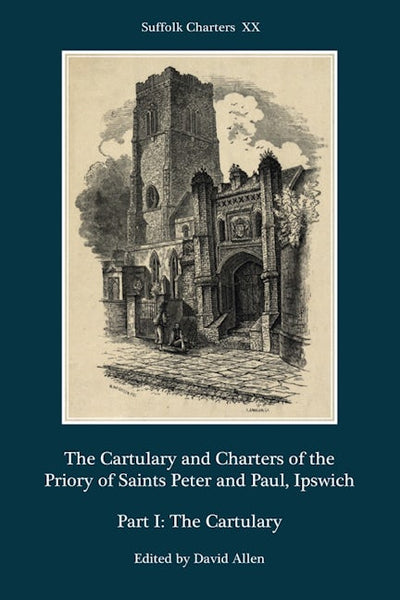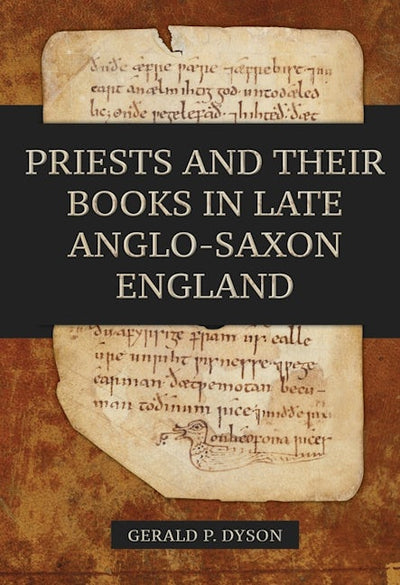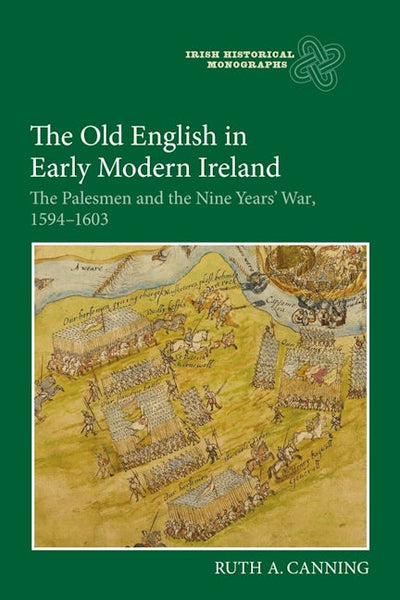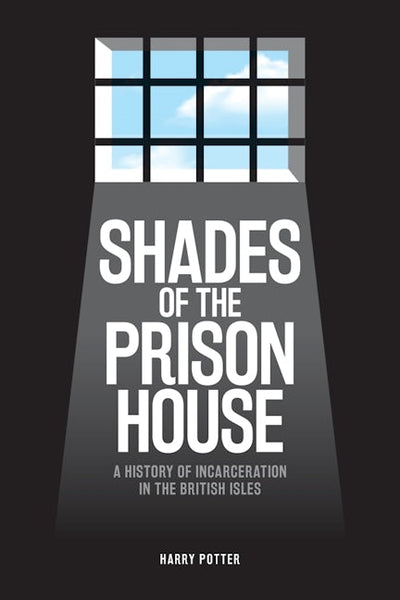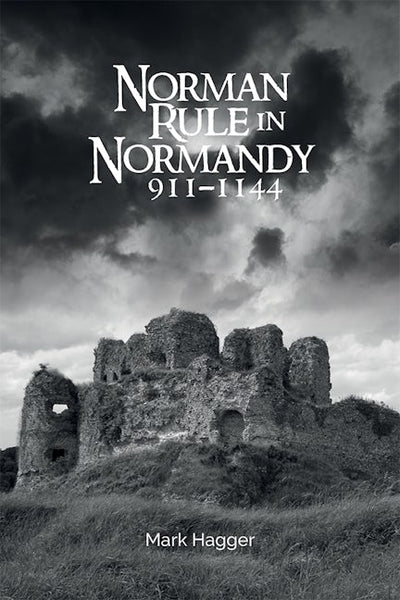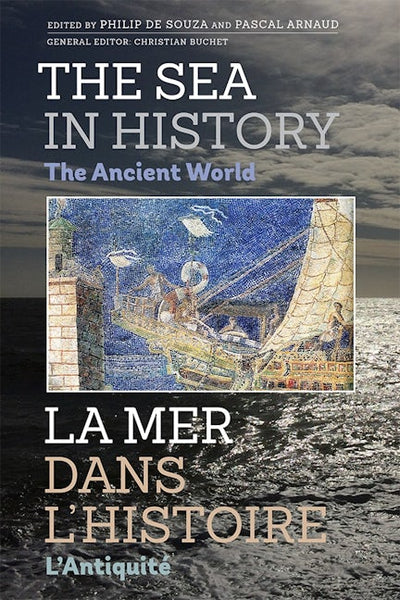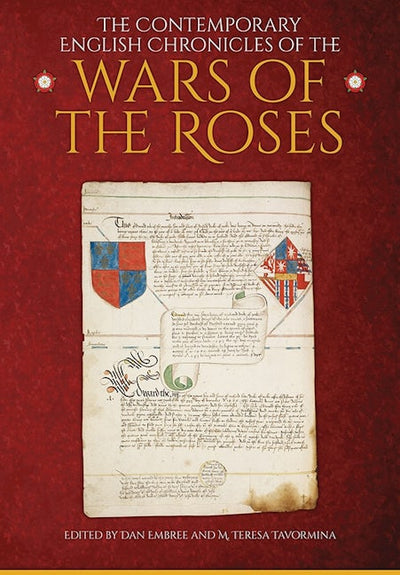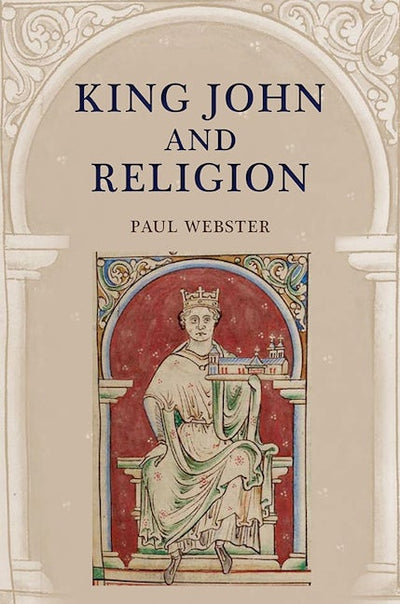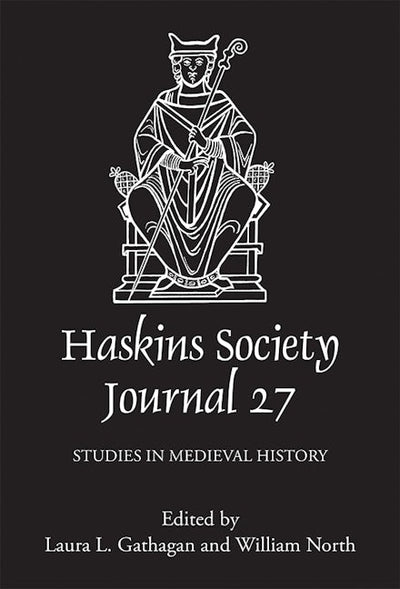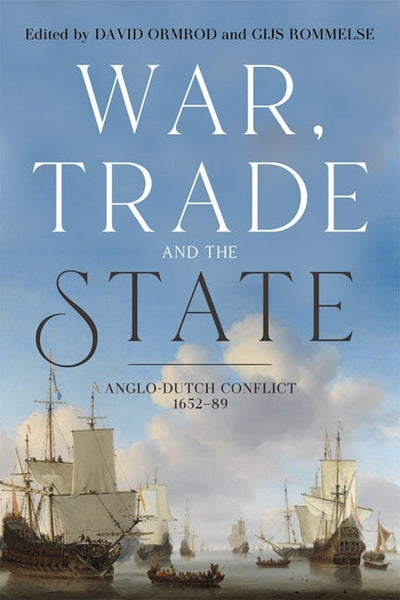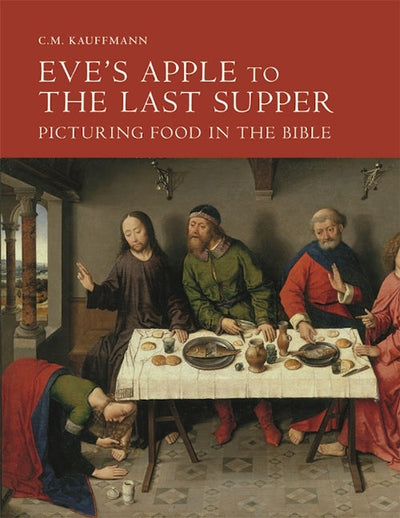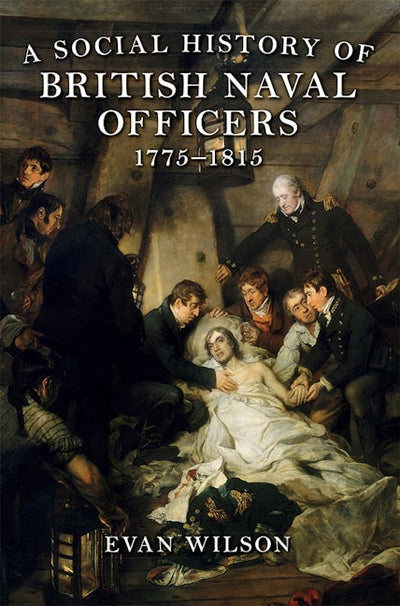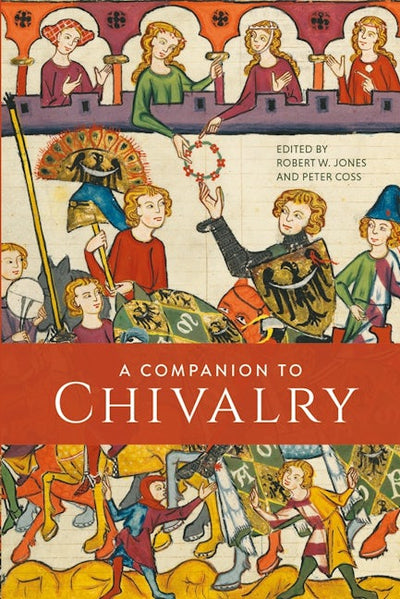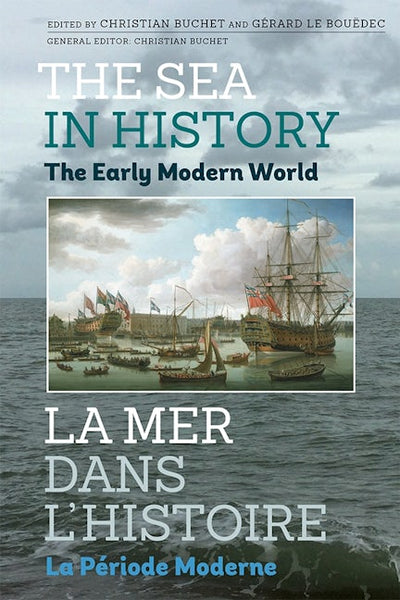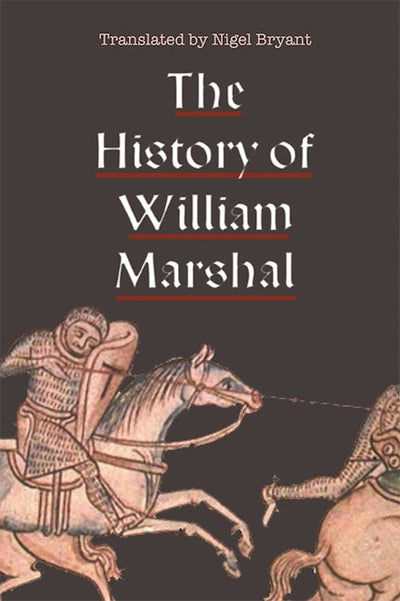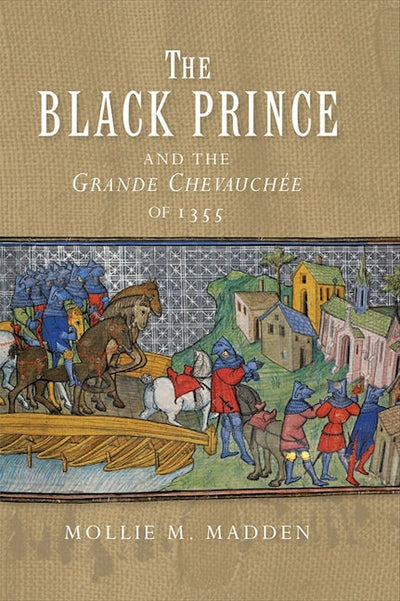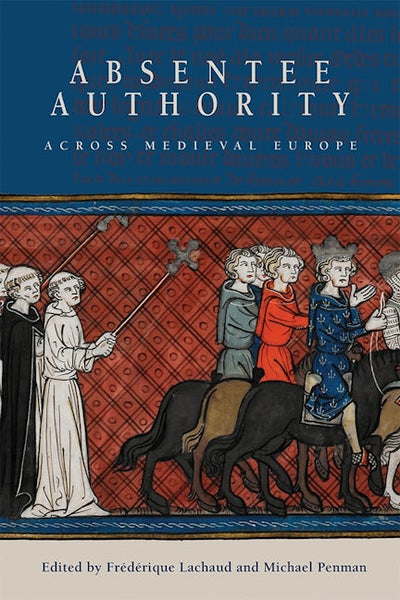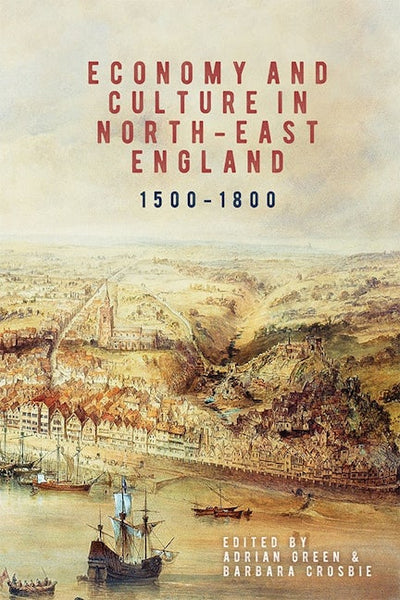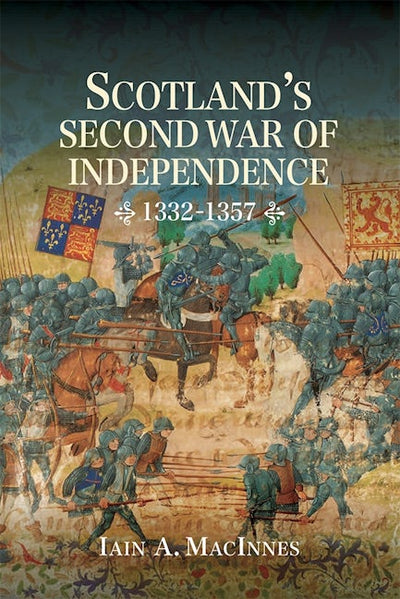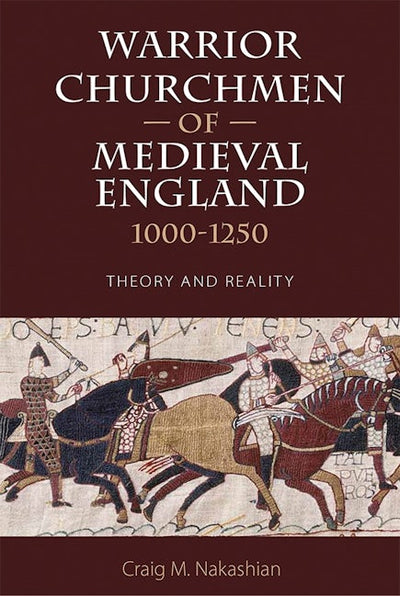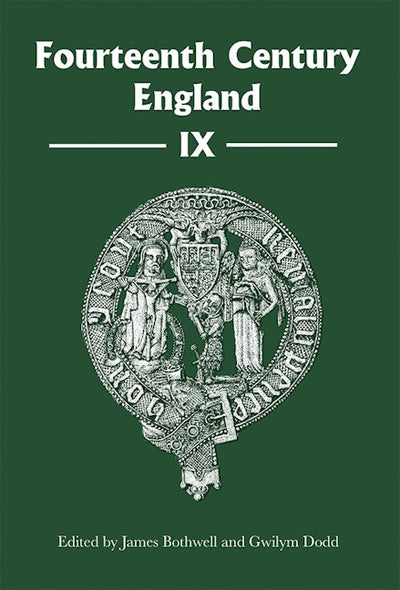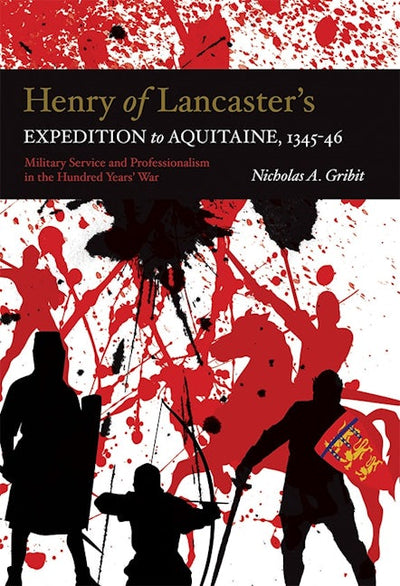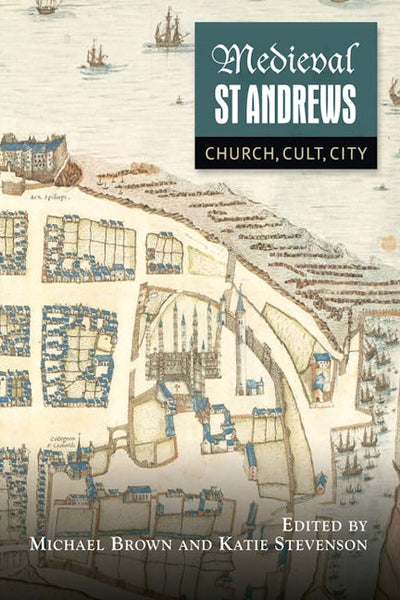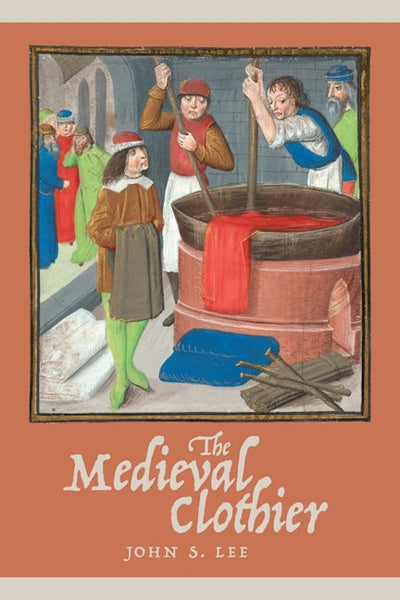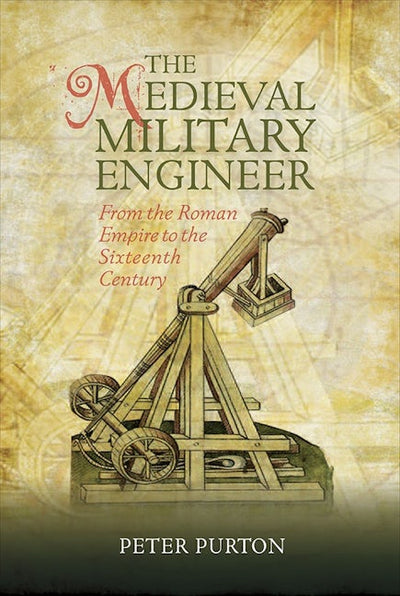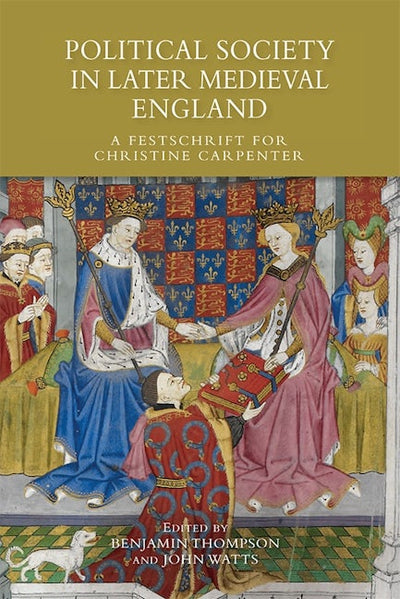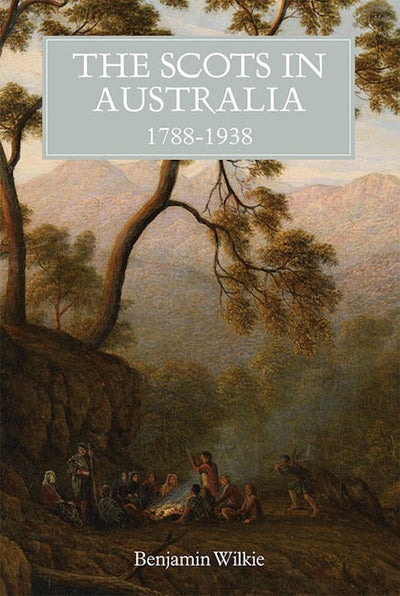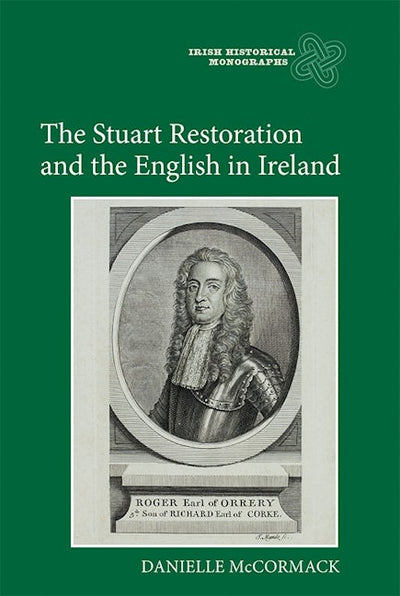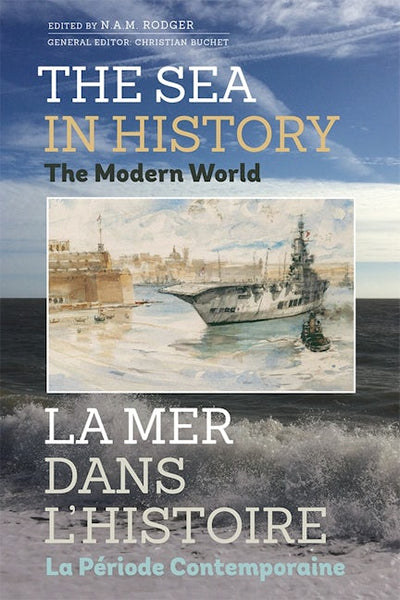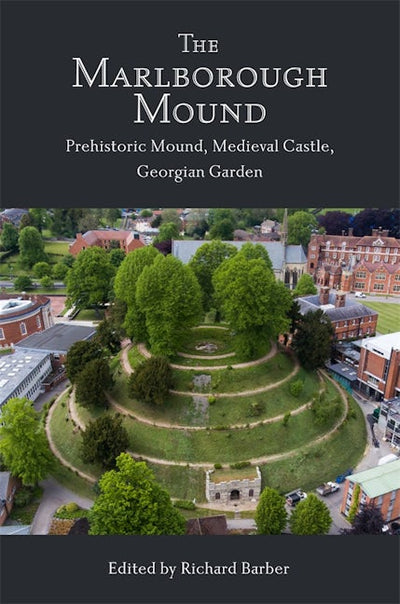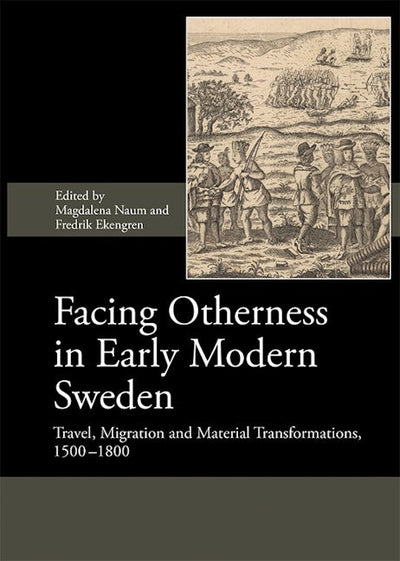-
Antiques & Collectibles
-
Architecture
-
Art
-
Bibles
-
Biography & Autobiography
-
Body, Mind & Spirit
-
Business & Economics
-
Comics & Graphic Novels
-
Computers
-
Cooking
-
Crafts & Hobbies
-
Design
-
Education
-
Family & Relationship
-
Fiction
-
Foreign Language Study
-
Games & Activities
-
Gardening
-
Health & Fitness
-
History
-
House & Home
-
Humor
-
Juvenile Fiction
-
Juvenile Nonfiction
-
Language Arts & Disciplines
-
Law
-
Literary Collections
-
Literary Criticism
-
Mathematics
-
Medical
-
Miscellaneous
-
Music
-
Nature
-
Performing Arts
-
Pets
-
Philosophy
-
Photography
-
Poetry
-
Political Science
-
Psychology
-
Reference
-
Religion
-
Self-Help
-
Science
-
Social Science
-
Sports & Recreation
-
Study Aids
-
Technology & Engineering
-
Transportation
-
Travel
-
True Crime
-
Young Adult Fiction
-
Young Adult Nonfiction
-
Antiques & Collectibles
-
Architecture
-
Art
-
Bibles
-
Biography & Autobiography
-
Body, Mind & Spirit
-
Business & Economics
-
Comics & Graphic Novels
-
Computers
-
Cooking
-
Crafts & Hobbies
-
Design
-
Education
-
Family & Relationship
-
Fiction
-
Foreign Language Study
-
Games & Activities
-
Gardening
-
Health & Fitness
-
History
-
House & Home
-
Humor
-
Juvenile Fiction
-
Juvenile Nonfiction
-
Language Arts & Disciplines
-
Law
-
Literary Collections
-
Literary Criticism
-
Mathematics
-
Medical
-
Miscellaneous
-
Music
-
Nature
-
Performing Arts
-
Pets
-
Philosophy
-
Photography
-
Poetry
-
Political Science
-
Psychology
-
Reference
-
Religion
-
Self-Help
-
Science
-
Social Science
-
Sports & Recreation
-
Study Aids
-
Technology & Engineering
-
Transportation
-
Travel
-
True Crime
-
Young Adult Fiction
-
Young Adult Nonfiction
The Register of the Goldsmiths' Company: Deeds and Documents, c. 1190 to c. 1666 [3 Volume Set]
Regular price $650.00 Save $-650.00The Worshipful Company of Goldsmiths, commonly known as the Goldsmiths' Company, is one of the twelve Great Livery Companies of the City of London. This three-volume edition provides translations of the company's Register of Deeds with full explicatory annotation and with a clear introduction to both the manuscript and the legal texts contained within. Additionally, the volumes contain detailed name and subject indexes.
The company's Register of Deeds has never been fully utilised by historians, but it contains a record copy made from the fifteenth century onwards of the original deeds of the company's acquisitions of property from the reign of King Richard I to the seventeenth century. These deeds reveal much about the precise location of properties and their inhabitants. Wills, often appearing in the Register, help to piece together a social history of the time. Charitable purposes were often the reason for monies or property bequeathed to the Goldsmiths, sometimes of an educational nature, or of almsgiving to the poor, or for the training and support of young goldsmiths and silversmiths. Many documents also concern women, either acting solely in their own name or jointly with a husband, sometimes also appearing as daughters or sisters, providing evidence regarding their legal position during the medieval and early modern period.
The editing and translation of these documents (from Latin and French into modern-day English) will be of great use to historians interested in the buildings of medieval and Tudor London and their use as personal or business premises. But beyond these obvious confines, these so far hidden sources will help to rewrite a social, legal, and economic history of medieval and Tudor London.
SPECIAL INTRODUCTORY PRICE: £395/$575. Rises to full price £450/$650 on 1st January 2023.
![The Register of the Goldsmiths' Company: Deeds and Documents, c. 1190 to c. 1666 [3 Volume Set]](http://indiepubs.com/cdn/shop/files/9781783276240_e30fdda0-4d61-4558-b2d8-615df9d9a842_{width}x.jpg?v=1721433559)
Gaelic Influence in the Northumbrian Kingdom
Regular price $130.00 Save $-130.00SHORTLISTED IN SCOTLAND'S NATIONAL BOOK AWARDS 2021
The first full-scale, interdisciplinary treatment of the wide-ranging connections between the Gaelic world and the Northumbrian kingdom.
Northumbria was the most northerly Anglo-Saxon kingdom; its impressive landscape featured two sweeping coastlines, which opened the area to a variety of cultural connections. This book explores influences that emanated from the Gaelic-speaking world, including Ireland, the Isle of Man, Argyll and the kingdom of Alba (the nascent Scottish kingdom). It encompasses Northumbria's "Golden Age", the kingdom's political and scholarly high-point of the seventh and early eighth centuries, and culminates with the kingdom's decline and fragmentation in the Viking Age, which opened up new links with Gaelic-Scandinavian communities. Political and ecclesiastical connections are discussed in detail; the study also covers linguistic contact, material culture and the practicalities of travel, bringing out the realities of contemporary life. This interdisciplinary approach sheds new light on the west and north of the Northumbrian kingdom, the areas linked most closely with the Gaelic world. Overall, the book reveals the extent to which Gaelic influence was multi-faceted, complex and enduring.
Dr FIONA EDMONDS is Reader in History and Director of the Regional Heritage Centre at Lancaster University.

Commemoration in Medieval Cambridge
Regular price $120.00 Save $-120.00WINNER of a 2019 Cambridgeshire Association for Local History award.
The people of medieval Cambridge chose to be remembered after their deaths in a variety of ways - through prayers, Masses and charitable acts, and bytomb monuments, liturgical furnishings and other gifts. The colleges of the university, alongside their educational role, arranged commemorative services for their founders, fellows and benefactors. Together with the town's parishchurches and religious houses, the colleges provided intercessory services and resting places for the dead.
This collection explores how the myriad of commemorative enterprises complemented and competed as locations where the living and the dead from "town and gown" could meet. Contributors analyse the commemorative practices of the Franciscan friars, the colleges of Corpus Christi, Trinity Hall and King's, and within Lady Margaret Beaufort's Cambridge household; the depictions of academic and legal dress on memorial brasses, and the use and survival of these brasses. The volume highlights, for the first time, the role of the medieval university colleges within the family ofcommemorative institutions; in offering a new and broader view of commemoration across an urban environment, it also provides a rich case-study for scholars of the medieval Church, town, and university.
JOHN S. LEE is Research Associate at the Centre for Medieval Studies, University of York; CHRISTIAN STEER is Honorary Visiting Fellow in the Department of History, University of York. Contributors: Sir John Baker, Richard Barber, Claire GobbiDaunton, Peter Murray Jones, Elizabeth A. New, Susan Powell, Michael Robson, Nicholas Rogers.

Age Relations and Cultural Change in Eighteenth-Century England
Regular price $130.00 Save $-130.00This book explores the links between age relations and cultural change, using an innovative analytical framework to map the incremental and contingent process of generational transition in eighteenth-century England. The study reveals how attitudes towards age were transformed alongside perceptions of gender, rank and place. It also exposes how shifting age relations affected concepts of authenticity, nationhood, patriarchy, domesticity and progress.
The eighteenth century is not generally associated with the formation of distinct generations. This book, therefore, charts new territory as an age cohort in Newcastle upon Tyne is followed from infancy to early adulthood,using their experiences to illuminate a national, and ultimately imperial, pattern of change. The chapters begin in the nurseries and schoolrooms in which formative years were spent and then traverse the volatile terrain of adolescence, before turning to the adult world of fashion and politics. This investigation uncovers the roots of a generational divide that spilled into the political arena during the parliamentary election of 1774. But more than that,it demonstrates that the interactions between age groups were central to major social and cultural developments in the eighteenth century and serves as a powerful reminder of the need to recognise that people lived through not in the past.

A Vicar in Victorian Norfolk
Regular price $49.95 Save $-49.95The Revd Benjamin Armstrong, for many years vicar of the market town of East Dereham, Norfolk, is best-known for what have been described as "one of England's greatest clerical diaries", eleven volumes spanning his whole adult life, between 1850 and 1888. This first full biography puts his story into the context of the period in which he lived: a time of turmoil in the church, with its conflict between high and low forms of service, and theological arguments, stirred up not least by controversies over Darwin's theories of creation. It also vividly portrays rural life at a time of great change, when society became more fluid, railways allowed the economy to grow and develop, and thevote was extended. We see this through the eyes of Armstrong himself, a fine example of the then "new-style" Church of England clergy who lived in their parishes, took more services than their predecessors, supported their schools and showed a genuine concern for the well-being of their parishioners. By the time he retired, church life in Dereham had been transformed, with congregations typically of 1,000 at each of the Sunday services.
Armstrong also served on various Local Boards, as well as setting up the Literary Institute, the Rifle Volunteers and supporting musical and cultural events. He also had a full social life; his friends included prominent townspeople and the local clergy, gentry and aristocracy -- and there are incisive pen portraits of many of his associates and their eccentricities. These activities are set against the background of his family life, with its moments of tragedy and worry, including the death of a young child and the elopement of another.
Dr SUSANNA WADE MARTINS is an Honorary Research Fellow in the School of History at the University of East Anglia. Her previous publications includeThe East Anglian Countryside: Changing Landscapes 1870-1950 with Tom Williamson (2008), Coke of Norfolk, 1754-1842 (2009) and The Conservation Movement in Norfolk - A History (2015).

Conquests in Eleventh-Century England: 1016, 1066
Regular price $190.00 Save $-190.00Eleventh-century England suffered two devastating conquests, each bringing the rule of a foreign king and the imposition of a new regime. Yet only the second event, the Norman Conquest of 1066, has been credited with the impact and influence of a permanent transformation. Half a century earlier, the Danish conquest of 1016 had nonetheless marked the painful culmination of decades of raiding and invasion - and more importantly, of centuries of England's conflict and cooperation with the Scandinavian world - and the Normans themselves were a part of that world. Without 1016, the conquest of 1066 could never have happened as it did: and yet disciplinary fragmentation in the study of eleventh-century England has ensured that a gulf separates the conquests in modern scholarship.
The essays in this volume offer multidisciplinary perspectives on a century of conquest: in politics, law, governance, and religion; in art, literature, economics, and culture; and in the lives and experiences of peoples in a changing, febrile, and hybrid society. Crucially, it moves beyond an insular perspective, placing England within its British, Scandinavian, and European contexts; and in reaching across conquests connects the tenth century and earlier with the twelfth century and beyond, seeing the continuities in England's Anglo-Saxon, Danish, Norman, and Angevin elite cultureand rulership. The chapters break new ground in the documentary evidence and give fresh insights into the whole historical landscape, whilst fully engaging with the importance, influence, and effects of England's eleventh-centuryconquests, both separately and together.
LAURA ASHE is Professor of English Literature and Fellow and Tutor in English, Worcester College, Oxford; EMILY JOAN WARD is Moses and Mary Finley Research Fellow, Darwin College, Cambridge.
Contributors: Timothy Bolton, Stephanie Mooers Christelow, Julia Crick, Sarah Foot, John Gillingham, Charles Insley, Catherine Karkov, Lois Lane, Benjamin Savill, Peter Sigurdson Lunga, Niels Lund, Rory Naismith, Bruce O'Brien, Rebecca Thomas, Elizabeth M. Tyler, Elisabeth van Houts, Emily Joan Ward.

The Decline of Serfdom in Late Medieval England
Regular price $170.00 Save $-170.00Scholars from various disciplines have long debated why western Europe in general, and England in particular, led the transition from feudalism to capitalism. The decline of serfdom between c.1300 and c.1500 in England is centralto this "Transition Debate", because it transformed the lives of ordinary people and opened up the markets in land and labour. Yet, despite its historical importance, there has been no major survey or reassessment of decline of serfdom for decades. Consequently, the debate over its causes, and its legacy to early modern England, remains unresolved.
This dazzling study provides an accessible and up-to-date survey of the decline of serfdom in England, applying a new methodology for establishing both its chronology and causes to thousands of court rolls from 38 manors located across the south Midlands and East Anglia. It presents a ground-breaking reassessment, challenging many of the traditional interpretations of the economy and society of late-medieval England, and, indeed, of the very nature of serfdom itself.
Mark Bailey is High Master of St Paul's School, and Professor of Later Medieval History at the University of East Anglia. He has published extensively on the economic and social history of England between c.1200 and c.1500, including Medieval Suffolk (2007).

The Making of Victorian Bristol
Regular price $75.00 Save $-75.00Overshadowed by more economically vibrant towns of the industrial north, Bristol's prospects in 1800 were far from certain. This book provides a detailed account of how Bristol was transformed by a growing population, industrial change, technological innovation and urban expansion over the course of the nineteenth century. It explores the development of the physical fabric of the city, looking at the impact on the landscape of new types of buildings, increased housing and the repurposing of older areas, the growth of manufacturing, and the disruptive technologies of the railways and steam-powered ships. The book examines how the population responded to the opportunities, and challenges, afforded by national economic growth and world trade and which groups had the power to decide what solutions should be adopted. Finally, it considers the growing influence of central government on local decisions in relationto issues such as public health, education and housing. The book offers a distinctive and original contribution not only to the historiography of Bristol, but also to the study of urbanisation in nineteenth-century Britain in general.
PETER MALPASS is Emeritus Professor of Housing and Urban Studies at the University of the West of England, Bristol.

The Cartulary and Charters of the Priory of Saints Peter and Paul, Ipswich
Regular price $105.00 Save $-105.00The charters and other documents recorded in the thirteenth-century Cartulary of the Augustinian priory of Sts Peter and Paul, Ipswich, donated to the public library of Lexington, Kentucky, in 1806, and purchased for Ipswich Record Office in 1970, throw light on an institution whose early history was mostly shrouded in obscurity. They are an important source for the study both of the expansion of the priory estates and the consolidation of its holdings bythe gift or purchase of adjoining parcels of land in common fields, and a mine of information for the student of place-names.
The charters presented here, with full explanatory notes, complement the contents of the priory'scartulary published in 2018. They illuminate the religious life of the priory, its community, spiritual rewards for its benefactors, steps taken to safeguard its assets, and the circumspection sometimes shown by the convent in itsdealings with the powerful.

Suppressing Piracy in the Early Eighteenth Century
Regular price $130.00 Save $-130.00This book charts the surge and decline in piracy in the early eighteenth century (the so-called "Golden Age" of piracy), exploring the ways in which pirates encountered, obstructed, and antagonised the diverse participants of the British empire in the Caribbean, North America, Africa, and the Indian Ocean. The book's primary focus is on how anti-piracy campaigns were constructed as a result of the negotiations, conflicts, and individual undertakings of different imperial actors operating in the commercial and imperial hub of London; maritime communities throughout the British Atlantic; trading outposts in West Africa and India; and marginal and contested zones such as the Bahamas, Madagascar, and the Bay Islands. It argues that Britain and its empire was not a strong centralised imperial state; that the British imperial administration and the Royal Navy did not have the resources to mount a state-led, empire-wide war against piracy following the sharp increase in piratical attacks after 1716; and that it was only through manifold activities taking place in different colonial centres with varied colonial arrangements, economic strengths, and access to resources for maritime defence - which was often shaped by competing and contradictory interests - that Atlantic piracy was gradually discouraged, although not eradicated, by the mid-1720s.

Ireland’s English Pale, 1470-1550
Regular price $120.00 Save $-120.00A key argument of this book is that the English Pale - the four counties around Dublin under English control - was expanding during the early Tudor period, not contracting, as other historians have argued. The author shows how the new system, whereby "the four obedient shires" were protected by new fortifications and a newly-constituted English-style militia, which replaced the former system of extended marches, was highly effective, making unnecessary money and troops from England, and enabling the Dublin government to be self-financing. The book provides full details of this new system. It also demonstrates how direct rule by an English army and governor, which replaced the system in the years after 1534, was much more costly and led on in turn to the policy of "surrender and regrant" under which Irish chiefs became subject to English law. The book highlights how this policy made the English Pale's frontiers redundant, but how ideologically ideas of "English civility" nevertheless survived, and "the wild Atlantic way" remained "beyond the Pale".

Eyewitness and Crusade Narrative
Regular price $170.00 Save $-170.00Eyewitness is a familiar label that historians apply to numerous pieces of evidence. It carries compelling connotations of trustworthiness and particular proximity to the lived experience of historical actors. But it has received surprisingly little critical attention.
This book seeks to open up discussion of what we mean when we label a historical source in this way. Through a close analysis of accounts of the Second, Third and Fourth Crusades, aswell as an in-depth discussion of recent research by cognitive and social psychologists into perception and memory, this book challenges historians of the Middle Ages to revisit their often unexamined assumptions about the place of eyewitness narratives within the taxonomies of historical evidence. It is for the most part impossible to situate the authors of the texts studied here, viewed as historical actors, in precise spatial and temporal relation to the action that they purport to describe. Nor can we ever be truly certain what they actually saw. In what, therefore, does the authors' eyewitness status reside, and is this, indeed, a valid category of analysis?
This book argues that the most productive way in which to approach the figure of the autoptic author is not as some floating presence close to historical events, validating our knowledge of them, but as an artefact of the text's meaning-makingoperations, in particular as these are opened up to scrutiny by narratological concepts such as the narrator, focalization and storyworld. The conclusion that emerges is that there is no single understanding of eyewitness runningthrough the texts, for all their substantive and thematic similarities; each fashions its narratorial voice in different ways as a function of its particular story-telling strategies.
MARCUS BULL is Andrew W. Mellon Distinguished Professor of Medieval and Early Modern Studies at the University of North Carolina, Chapel Hill

Fur, Fashion and Transatlantic Trade during the Seventeenth Century
Regular price $130.00 Save $-130.00This book explores the development of the fur trade in Chesapeake Bay during the seventeenth century, and the wide-ranging links that were formed in a new and extensive transatlantic chain of supply and consumption. It considers changing fashion in England, the growing demand for fur, at a time when the Russian fur trade was in decline, examines native North Americans and their trading and other exchanges with colonists, and explores the nature of colonial society, including the commercial ambitions of a varied range of investors. As such, it outlines the intense rivalry which existed between different colonies and colonial interests. Although the book argues that fur never supplanted tobacco as the region's principal export, noting that the trade declined as new, more profitable sources of supply were opened up, nevertheless the case of the Chesapeake fur trade provides an excellent example of how different elements in a new transatlantic enterprise fitted together and had a profound impact on each other.

The British Navy in the Caribbean
Regular price $130.00 Save $-130.00This book charts the involvement of the British navy in the Caribbean from the earliest times to the present. It recounts the voyages of sixteenth century English adventurers such as John Hawkins and Francis Drake and their attacks on Spanish territories, outlines the capture of Jamaica during the time of Oliver Cromwell's rule and describes the growth of the British slave trade. It goes on to discuss the late seventeenth century and eighteenth century conflicts and wars with the Dutch, Spanish and French and the War of American Independence, analyses the effect of the abolition of the slave trade and explores the British dominance which prevailed throughout much of the nineteenth century. The book concludes by examining how in the twentieth century the British navy withdrew almost entirely from the Caribbean, tacitly ceding control to the United States. Throughout the book relates developments in the Caribbean to developments in Britain and in the British navy more widely. John D. Grainger is the author of numerous books for a variety of publishers, including eight previously published books for Boydell and Brewer, including The British Navy in the Baltic, Dictionary of British Naval Battles and The First Pacific War: Britain and Russia, 1854-56.

The Cistercians in the Middle Ages
Regular price $65.00 Save $-65.00The Cistercians (White Monks) were the most successful monastic experiment to emerge from the tumultuous intellectual and religious fervour of the eleventh and twelfth centuries. By around 1150 they had established houses the length and breadth of Western Christendom and were internationally renowned. They sought to return to a simple form of monastic life, as set down in the Rule of St Benedict, and preferred rural locations "far from the haunts of men".But, as recent research has shown, they were by no means isolated from society but influenced, and were influenced by, the world around them; they moved with the times.
This book seeks to explore the phenomenon that was the Cistercian Order, drawing on recent research from various disciplines to consider what it was that made the Cistercians distinctive and how they responded to developments. The book addresses current debates regarding the origins and evolution of the Order; discusses the key primary sources for knowledge; and covers architecture, administration, daily life, spirituality, the economy and the monks' ties with the world.
Professor Janet Burton teaches at the School of Archaeology, History and Anthropology, University of Wales Trinity Saint David; Dr Julie Kerr is Honorary Research Fellow in the School of History, University of St Andrews.

Military Society and the Court of Chivalry in the Age of the Hundred Years War
Regular price $120.00 Save $-120.00The highest and most sovereign things a knight ought to guard in defence of his estate are his troth and his arms. So declared Richard, Lord Scrope of Bolton, before the Court of Chivalry, eloquently encapsulating the fundamental role heraldic identity played in the lives of the late medieval English gentry. The Court of Chivalry was England's senior military court during the age of the Hundred Years War (1337-1453), but unfortunately its medieval registers are now lost and only a bare few cases survive. This book explores three of the best preserved of those cases: Scrope v. Grosvenor (1385-91), Lovel v. Morley (1386-7) and Grey v. Hastings (1407-10), disputes in which competing knightly families claimed rightful possession of the same coat-of-arms. Hundreds of witnesses gave evidence in each of these cases, in the process providing vivid insights into the military, social, and cultural history of late medieval England.
This study asks a number of important questions. How did the plaintiffs and defendants choose their witnesses? What motives and constraints shaped their choices? How did they gain access to the various gentry networks that spoke in their defence? To what extent did lordly influence impact upon the composition of each witness list? How well did the witnesses themselves know each other? What role did bonds of regional solidarity play before the Court? Perhaps most significantly, what does the testimony itself reveal about the chivalric culture of the age? These questions enable the historian to probe in considerable depth the character of gentry military society, and its chivalric ethos, at a time when the victories of Edward III (1327-1377) were receding ever deeper into popular memory and the triumphs of Henry V (1413-1422) still lay in the future.
PHILIP CAUDREY is an Honorary Research Associate at the University of Tasmania, Australia.

The Crown Pleas of the Suffolk Eyre of 1240
Regular price $75.00 Save $-75.00The eyre was an organised judicial visitation to the counties of England by the king's justices to hear all types of plea, civil and crown, as well as to investigate any matters for the king that pertain to the county; it was thus a hugely important part of the legal process.
This volume, edited by Eric Gallagher with an introduction by Henry Summerson, follows on from Dr Gallagher's edition and translation of the civil pleas of the same eyre, published by the Suffolk Records Society in 2009. But whereas the civil pleas deal primarily with litigation between landowners, the crown pleas are mostly concerned with the actions of townsmen and peasants, recorded both as killers and thieves, and as the victims of crime. Like the civil pleas, the crown pleas illuminate the workings of the common law, but in addition they illustrate the functions and purposes of local and central government, shedding light in sometimes vivid detail upon the lives of the humbler members of society, upon their occupations, relationships, misfortunes and quarrels - and the sometimes bizarre ways in which they met their deaths. The eyre was led by William of York, the King's justiciar and later bishop of Salisbury, and his colleagues who met at Ipswich, Cattishall (outside Bury St Edmunds) and Dunwich.
The eyre roll, now in the National Archives, is the first from Suffolk surviving in full to have been edited and published; it has the particular interest of coming from a county that was then one of the most populous and prosperous of English shires.

A Protestant Lord in James VI's Scotland
Regular price $120.00 Save $-120.00George Keith, fifth Earl Marischal, is an outstanding example of long-term successful Protestant Lordship in the reign of James VI. The founder of Marischal College in Aberdeen and the towns of Peterhead and Stonehaven, reputed tobe the richest earl in Scotland, Marischal and his kindred were witness to a Scotland reeling from the consequences of the Protestant Reformation and coming to terms with their ambitious new king, who would be whisked away to England in 1603.
This book explores Marischal's political struggles in the north east and at court, and his strategies in managing the kindred throughout these storms. He was economically active in estate improvement, shippingand finance, and was prominent in regional activities such as feuding and upholding local justice. An exploration of the Keiths' interaction with the Protestant Kirk redresses the notion of the "Conservative North East" of Scotland, but also reveals the conflict between earthly lordship and godly reform. Marischal, King James' "Little Fat Pork", is thus a perfect window into noble society, religion and politics in Jacobean Scotland.
Dr MILES KERR-PETERSON is an affiliate in Scottish History at the University of Glasgow.

The Parish and the Chapel in Medieval Britain and Norway
Regular price $120.00 Save $-120.00From the eleventh and twelfth centuries, Latin Christendom was increasingly focussed, both institutionally and culturally, on Rome and the papacy. A key element of these changes was a growing concern with the provision of pastoralcare and the standardisation of practices and beliefs. However, whilst parish churches have received considerable scholarly attention, chapels have been largely neglected, despite the fact that they were widespread in the landscape of medieval Britain and Norway, found in locations ranging from villages to castles, and central to the life of many.
This book, the first major comparative study of the subject, begins by examining what a chapel was, whoused them, and their purpose. Using archaeological remains, the wider parish landscape - settlements, transport and geography - and historical records such as papal letters, it then categorises chapels according to function and their relationship with the parish church, showing that they served a far greater range of purposes than has previously been assumed. The author also considers whether the drive for uniformity had an impact on religious landscapesin Britain and Norway, arguing that there is little evidence of a Viking impact on chapel organisation in the British Isles, with the evidence pointing towards Scandinavian adoption of pre-existing organisation and local cults.
Sarah Thomas gained her PhD from the University of Glasgow; she is currently a postdoctoral researcher at the University of Stirling.

The Book of Llandaf as a Historical Source
Regular price $120.00 Save $-120.00Awarded the Francis Jones Prize in Welsh History 2019 by Jesus College Oxford
The early-twelfth-century Book of Llandaf is rightly notorious for its bogus documents - but it also provides valuable information on the earlymedieval history of south-east Wales and the adjacent parts of England. This study focuses on its 159 charters, which purport to date from the fifth century to the eleventh, arguing that most of them are genuine seventh-century and later documents that were adapted and "improved" to impress Rome and Canterbury in the context of Bishop Urban of Llandaf's struggles in 1119-34 against the bishops of St Davids and Hereford and the "invasion" of monks from English houses such as Gloucester and Tewkesbury. After assembling other evidence for the existence of pre-twelfth-century Welsh charters, the author defends the authenticity of most of the Llandaf charters' witness lists, elucidatestheir chronology, and analyses the processes of manipulation and expansion that led to the extant Book of Llandaf. This leads him to reassess the extent to which historians can exploit the rehabilitated charters as an indicator of social and economic change between the seventh and eleventh centuries and as a source for the secular and ecclesiastical history of south-east Wales and western England.
PATRICK SIMS-WILLIAMS is a Fellow of the British Academy; he was formerly Reader in Celtic and Anglo-Saxon in the University of Cambridge and Professor of Celtic Studies at Aberystwyth University.

The Life and Works of Robert Baillie (1602-1662)
Regular price $130.00 Save $-130.00From 1637 to 1660, the Scots witnessed rapid and confused changes in government and violent skirmishing, whilst impassioned religious disputes divided neighbours, friends and family. One of the most vivid accounts of this period may be found in the letters of the Glaswegian minister, Robert Baillie; but whilst his correspondence has long featured in historical accounts of the period, the man behind these writings has largely been forgotten.
This biography draws together for the first time an analysis of Baillie's career and writings, establishing his significance as a polemicist, minister, theologian, and contemporary historian. It is based on the first, systematic reading ofBaillie's extensive surviving manuscripts, comprising thousands of leaves of correspondence, treatises, sermons, and notebooks. Chapters address Baillie's writings on monarchy, church government, Reformed theology, liturgical change, Biblical scholarship, and Baillie's practice of record-keeping. Overall, the book challenges prevalent understandings of the intellectual landscape of Covenanted Scotland, situating Baillie and his contemporaries on the peripheries of a dynamic, European Republic of Letters.
Alexander D. Campbell is Social Sciences and Humanities Research Council of Canada Post-Doctoral Fellow, Queen's University, Canada.

Framing the World
Regular price $130.00 Save $-130.00The long sixteenth century saw a major shift in European geographical understanding: in the space of little more than a hundred years Western Europeans moved to see the world as a place in which all parts of the sphere were made by God for human exploitation and to interact with one another. Taking such a scenario as its historical backdrop, Framing the Early Modern World examines the influence of Greek and Roman ideas on the formulation of new geographical theories in sixteenth-century western Europe.
While discussions of inhabitability dominate the geographical literature throughout the sixteenth century, humanist geographers of the sixteenth century, trained in Greek and Roman writings, found in them the key intellectual tools which allowed the oikoumene (the habitable world) to be redefined as a globally-connected world. In this world, all parts of the sphere were designed to be in communication with one another. The coincidence of the Renaissance and the period of European exploration enabled a new geographical understanding fashioned as much by classical theory as by early modern empirical knowledge. Newly discovered lands could then be defined, exploited and colonized. In this way, the author argues, the seeds of the modern era of colonization, expansionism and ultimately globalization were sown. Framing the Early Modern World is a timely work, contributing to a growing discourse on the origins of globalization and the roots of modernity.

Widows in European Economy and Society, 1600-1920
Regular price $130.00 Save $-130.002017 CHOICE Outstanding Academic Title
"A terrific piece of work". JANE HUMPHRIES, Professor of Economic History and Fellow of All Souls College, University of Oxford
Widows are often viewed as being marginalised in society, struggling to make a living and in need of financial and other support. However, as this extensively researched and wide-ranging book reveals, widows did, in fact, engage very effectively in economic activity, often being in charge of families, households and commercial enterprises. The book outlines how extensive widowhood was; examines the provisions made for the support of widows, including in the form of marriage contracts, dowries andcharitable assistance; and provides numerous examples of widows being economically active, paying their way and involving themselves energetically in society - one notable example being Barbe-Nicole Clicquot, who established a very successful company producing La Veuve Clicquot champagne. Using statistical analysis and individual case studies, the book contrasts the situation in different parts of Europe, and between rural and urban areas, and shows how provision for widows both in law and in practice evolved over time. Overall, it contributes a great deal to women's history, helping to correct the image that women were victims of male society, and to family history, showing thatexceptions to the "ideal" nuclear family were very common.
BEATRICE MORING is Associate Professor in the Department of Political and Economic Studies at the University of Helsinki.
RICHARD WALL was a Senior Research Fellow in the Department of History at the University of Essex.

Warfare in the Norman Mediterranean
Regular price $130.00 Save $-130.00The kingdom of Sicily plays a huge part in the history of the Norman people; their conquest brought in a new era of invasion, interaction and integration in the Mediterranean, However, much previous scholarship has tended to concentrate on their activities in England and the Holy Land. This volume aims to redress the balance by focusing on the Hautevilles, their successors and their followers. It considers the operational, tactical, technical and logistical aspects of the conduct of war in the South throughout the eleventh and twelfth centuries, looking also at its impact on Italian and Sicilian multi-cultural society. Topics include the narratives of the Norman expansion, exchanges and diffusion between the "military cultures" of the Normans and the peoples they encountered in the South, and their varied policies of conquest, consolidation and expansion in the different operational theatres of land and sea.

Town Courts and Urban Society in Late Medieval England, 1250-1500
Regular price $130.00 Save $-130.00Town courts were the principal institution responsible for the delivery of justice and urban administration within medieval towns. Their records survive in large quantities in archives across England, and they provide an unparalleled insight into the lives and work of thousands of men and women who lived in these towns. The court rolls tell us much about the practice of law at the local level within towns, as well as yielding a broad range of perspectiveson the economy, society and administration of towns.
This volume is the first collection dedicated to the analysis of town courts and their records. Through a wide range of approaches, it offers new interpretations of the role that these courts played. It also demonstrates the wide range of uses to which court records can be put to in order to more fully understand medieval urban society. The volume draws on the records of a considerable number of towns and their courts across England, including London, York, Norwich, Lincoln, Nottingham, Lynn, Chester, Bromsgrove and Shipston-on-Stour.
RICHARD GODDARD is Associate Professor in the Department of History at the University of Nottingham; TERESA PHIPPS is Honorary Research Fellow in the Department of History at Swansea University.
Contributors: Christopher Dyer, Richard Goddard, Jeremy Goldberg, Alan Kissane, Maryanne Kowaleski, JaneLaughton, Esther Liberman Cuenca, Susan Maddock, Teresa Phipps, Samantha Sagui

The Templar Estates in Lincolnshire, 1185-1565
Regular price $130.00 Save $-130.00Much has been written about the history of the Knights Templar, the legendary Order of military monks. Far less attention, however, has been paid to the Templar estates in Western Christendom which supported their endeavours.
Set within the context of the turbulent history of medieval and Tudor England, the book follows the fate of the Templar estates in the county of Lincolnshire. Beginning with the survey of Templar property undertaken by Geoffrey FitzStephen in 1185, the story of the estates is followed through the primary sources of the estate accounts of 1307-1312, the Report of Philip de Thame of 1338, the Valor Ecclesiasticus of 1535 and the 1557 letter patent of Mary Tudor. What emerges is the previously untold tale of the characteristics of the estates, the personnel who were involved and the nature of Templar agriculture in the early fourteenth century. A number of major questions are addressed, including how Edward II dealt with the Templar estates after the arrest of the Order in 1308; whether all the Templar estates were transferred to the Hospitallers as is widely supposed; and what happened to the Hospitaller inheritance of Templar lands during the English Reformation.

The Fifteenth Century XIV
Regular price $95.00 Save $-95.00For four decades, Michael Hicks has been a figure central to the study of fifteenth-century England. His scholarly output is remarkable both for its sheer bulk and for the diversity of the fields it covers. This extraordinary breadth is reflected by the variety of subjects covered by the papers in the present volume, offered to Professor Hicks by friends, colleagues and former students to mark his retirement from the University of Winchester. Fifteenth-century royalty, nobility and gentry, long at the heart of his own work, naturally take centre stage, but his contribution to economic and regional history, both in the early part of his career as a research fellow at the Victoria County History and more recently as director of a succession of major research projects, is also reflected in the essays presented here.
The individual contributions are populated by some of the major characters of Yorkist England, many of them made household names by Professor Hicks's own writings - King Edward IV and his mistresses; the Neville earls of Warwick and Salisbury; the Stafford, Herbert, Percy, Tiptoft and de Vere earls of Devon, Pembroke,Northumberland, Worcester and Oxford - while the themes covered span the full panoply of medieval life: from treason to trade, warfare to widowhood and lordship to law enforcement. Equally broad is the papers' geographical spread,covering regions from Catalonia to Normandy, from Hampshire to Yorkshire and from Worcestershire and the Welsh marches to East Anglia.
Contributors: Anne Curry, Christopher Dyer, Peter Fleming, Ralph Griffiths, JohnHare, Winifred Harwood, Matthew Holford, Hannes Kleineke, Gordon McKelvie, Mark Page, Simon Payling, A.J. Pollard, James Ross, Karen Stöber, Anne F. Sutton

Stuart Marriage Diplomacy
Regular price $170.00 Save $-170.00Dynastic marriages mattered in early modern Europe. The creation of alliances and the outbreak of wars were tied to continental dynastic politics. This book combines cultural definitions of politics with a wider exploration of institutional, military, diplomatic and economic concerns with a view to providing a more comprehensive understanding of dynastic marriage negotiations. It covers a period from the signing of the Treaty of London in 1604 until afterthe Anglo-French and Anglo-Spanish peace treaties (1629-30). Stuart Marriage Diplomacy explores how the search for a bride for Princes Henry and Charles started a long process of protracted consultations between the key players of Europe: Spain, Italy, France, Rome, Brussels and the United Provinces. It shows the interconnections between these courts, thus advancing a 'continental turn' in the analysis of Stuart politics in the early seventeenth century, and considers how reason of state was often considered as more crucial than religion or economic concerns in the outcome of the Stuart-Habsburg and Stuart-Bourbon marriage negotiations. It also reveals the extent to which the interactions between Europe and non-European actors in both the Atlantic and the East contributed to a redefinition of European identity. It will engage not only scholars and students of early modern Europe but, more generally,those interested in the history of European courts and royalty.
VALENTINA CALDARI is Departmental Lecturer in Early Modern History at Balliol College, University of Oxford.
SARA J. WOLFSON is Senior Lecturer in Early Modern History at Canterbury Christ Church University.
CONTRIBUTORS: Paul Arblaster, Valentina Caldari, David Coast, Thomas Cogswell, Robert Cross, Andrea De Meo, Kelsey Flynn, Rubén González Cuerva, Melinda J. Gough, Helmer Helmers, José Eloy Hortal Muñoz, Adam Marks, Steve Murdoch, Michael Questier, Manuel Rivero, Porfirio Sanz Camañes, Edmond Smith, R. Malcolm Smuts, Peter H. Wilson, Sara J. Wolfson

For and Against Abelard
Regular price $95.00 Save $-95.00The late eleventh and twelfth centuries were Europe's first age of pamphlet warfare, of invective and satire. The perceived failure, or at least hypocrisy, of its new institutions-the new monastic orders and the reformed papacy-gave rise to the phenomenon, and it was shaped by the study of grammar and rhetoric in the new Schools. The central figures in the texts in the present book are Bernard of Clairvaux, the powerful ostensible founder of the Cistercianorder, and the popular and influential teacher Peter Abelard, leader of the radical faction in the Schools of Paris. The event which sparked this controversy was the Church council at Sens in 1141 which had led to the condemnation of Abelard's doctrines. Abelard proposed to use reason to explain the mysteries of faith, and this had led him into all kinds of difficulties with established church doctrine. The leading light in the atttack on his ideas was Bernard, the famous abbot of Clairvaux, a group of whose letters, written to gather support for it before and after the Council, are presented here. A little while later Abelard was defended by the vituperative but otherwise unknown Berengar, who wrote an outrageous Apology attacking Bernard; we also edit his remaining polemical works: his Letter to the Carthusians, and his Letter to the Bishop of Mende. None of Berengar's works has been translated before.An extensive introductory essay describes the course of the debate and the personnel, and analyses the invective employed by both Bernard and Berengar. There is full annotation identifying the writers' sources and clarifying the issues.

St Stephen's College, Westminster
Regular price $130.00 Save $-130.00In St Stephen's College, the royally-favoured religious institution at the heart of the busy administrative world of the Palace of Westminster, church and state met and collaborated for two centuries, from its foundation to pray for the royal dead by Edward III in 1348, until it was swept away by the second wave of the Reformation in 1548. Monarchs and visitors worshipped in the distinctive chapel on the Thames riverfront. Even when the king and his household were absent, the college's architecture, liturgy and musical strength proclaimed royal piety and royal support for the Church to all who passed by.
This monograph recreates a lost institution, whose spectacular cloister still survives deep within the modern Houses of Parliament. It examines its relationship with every English king from Edward III to Edward VI, how it defined itself as the "king's chief chapel" through turbulent dynastic politics,and its contributions to the early years of the English Reformation. It offers a new perspective on the workings of political, administrative and court life in medieval and early modern Westminster.

British Catholic Merchants in the Commercial Age
Regular price $120.00 Save $-120.00British Catholic merchants in the long eighteenth century occupied an ambiguous social space. On the one hand, their religion made them marginal and suspect figures in a nation increasingly defining itself by its Protestantism against the Catholic powers of Europe. On the other, their Catholicism, particularly as national rivalries erupted into outright war, afforded them access to markets and contacts overseas which their Protestant competitors found it increasingly difficult to reach.
Drawing on extensive original research on the business papers of one prominent Catholic merchant family, the Aylwards, Pizzoni maps a complex network of merchants emanating from trading housesin London, Cadiz and St Malo and linking Britain and Ireland, continental Europe, the Levant and colonial America. She reveals the high level of cooperation between these Catholic houses and their Protestant trading partners - a cooperation which seems to have overridden even such political perils as the Jacobite rebellion - and shows the increasing role played by smuggling and privateering in keeping the wheels of legitimate commerce turning in time of war. A final chapter looks particularly at the business activities of Roman Catholic women, who mostly inherited their husbands' businesses but in many cases developed and expanded them through new activities and investments.
This is a rich picture of commercial life in a time of shifting political and religious attitudes when the pressures of mercantilism led to de facto economic integration for the successful Catholic merchant class and opened up theroad which would lead to emancipation in the next century.

Merchant Crusaders in the Aegean, 1291-1352
Regular price $120.00 Save $-120.00The period from the fall of Acre until the end of the Crusade of Smyrna signified a dramatic shift in crusade impetus, as expeditions to liberate the Holy Land were superseded by those aimed at reducing the maritime power of the Turks in the Aegean. With this shift came a change in participation, as the members of the merchant republics of Venice and Genoa, together with the Frankish states in the Aegean, began slowly to replace the chivalry of western Europe as the most suitable leaders of a crusade. This resulted in a subtle alteration in how the papacy aimed to justify a crusade and encourage involvement from the merchant crusaders who were vital for its success.
Drawingon a wealth of previously unexplored sources, including those related to crusading and also those recording trade between Christians and Muslims in the eastern Mediterranean, this book analyses the changing Latin perceptions of the Greeks and Turks during the period, the nature of the military response to the threat posed by the Turks in the Aegean and the relationship between the papacy and the merchant crusaders. In its investigation of the complex interplay between mercantile objectives and crusading ideals, it sheds revealing insights into the complexities of crusading in the later Middle Ages.
Mike Carr is Lecturer in Late Medieval History at the University of Edinburgh.

Roguery in Print
Regular price $120.00 Save $-120.00Early modern England was fascinated by the figure of the rogue. The rogue, who could be a beggar or vagrant but also a cutpurse, conman, card sharp, and all-round 'trickster' or even a highwayman, appeared in a variety of texts including plays, ballads, romances, sermons, proclamations, and pamphlets. This book offers the first comprehensive analysis of an extensive body of rogue pamphlets published in London between the late sixteenth and late seventeenthcenturies, a period which saw a burst of publications about criminals. It examines how the figure of the rogue and rogue pamphlets developed and how the pamphlets both reflected and affected readers' perceptions of crime and morality against a backdrop of dramatic urban growth. The book reveals that rogue pamphlets were part of a wider range of popular literature which dealt with London and its early modern transformations and that they were not static representations of criminality but were shaped by the changing cultural expectations of authors, publishers, and readers. Drawing on cutting-edge research, this study represents a timely contribution to the history of the book and early modern print culture, the cultural history of crime, and the socio-cultural history of London.
LENA LIAPI teaches early modern history at Keele University.

Pietro Monte's Collectanea
Regular price $130.00 Save $-130.00Pietro Monte's Collectanea is a wide-ranging treatise on the arts of knighthood, focusing on martial arts, athletics, arms and armour, and military practice, but touching on subjects as diverse as diet, zoology and the design of life preservers. Monte, a courtier, soldier and scholar who won the respect of men like Leonardo da Vinci and Baldesar Castiglione, wrote the work in Spanish in the late 1400s, and later produced an expanded Latin translation. The Latin version, published in Milan in 1509, forms the basis of this translation.
Monte describes the techniques of personal combat with various weapons, including the two-handed and one-handed sword, pollaxe, and dagger, as well as wrestling, armored and mounted combat. He also documents the athletic activities used by knights to hone their physical abilities: running, jumping, throwing, and vaulting. Finally, the Collectanea is the solemedieval text to provide extensive discussion of the design of arms and armour.
This translation includes an illustrated introduction to Monte and his technical subject-matter, as well as a translation of Book 5 of Monte's De Dignoscendis Hominibus (1492), which overlaps much of the technical content of the Collectanea.
JEFFREY L. FORGENG is curator of Arms and Armour and Medieval Art at the Worcester Art Museum, and teaches as Adjunct Professor of History at Worcester Polytechnic Institute.

The Cartulary and Charters of the Priory of Saints Peter and Paul, Ipswich
Regular price $85.00 Save $-85.00The charters and other documents recorded in the thirteenth-century Cartulary of the Augustinian priory of Sts Peter and Paul, Ipswich, donated to the public library of Lexington, Kentucky, in 1806, and purchased for Ipswich Record Office in 1970, throw light on an institution whose early history was mostly shrouded in obscurity. They are an important source for the study both of the expansion of the priory estates and the consolidation of its holdings bythe gift or purchase of adjoining parcels of land in common fields, and a mine of information for the student of place-names. Light is thrown on various aspects of the life of the house, extensions to its buildings, and the stepstaken to safeguard its assets from predation. Included in it are various manorial documents and estate surveys of the late thirteenth century, the originals of which almost certainly did not survive the Peasants' Revolt a centurylater. Evidence is also present for the local family of the de Badeles as the priory's founding patrons.
This first volume of two presents the Priory's Cartulary, with introduction and notes.
DAVID ALLEN was archivist in the Suffolk Record Office for over thirty years. He has also produced, among other works, Ipswich Borough Archives, 1255-1835: A Catalogue (Suffolk Records Society 43).

Priests and their Books in Late Anglo-Saxon England
Regular price $130.00 Save $-130.00Priests were ubiquitous figures in the Anglo-Saxon world: they acted as educators, agents of royal authority, scribes, and dealers in real estate. But what set priests apart from the society in which they lived was the authority to provide pastoral care and their ability to use the written word. Early medieval bishops saw books as indispensable to a priest's duties and episcopal legislation frequently provided lists of books that priests were to have: tools of the trade for the secular clergy. These books are not only an exceedingly valuable window into pastoral care, but also a barometer for the changes taking place in the English church of the tenth and eleventh centuries.
This first full-length study of Anglo-Saxon priests' books examines a wide array of evidence, including booklists, music, liturgy, narrative, and, crucially, the surviving manuscripts. The volume opens with a consideration of the context of a priest's life and work, moving on to investigate the issues of clerical literacy and the availability of books to priests, uncovering avenues for priestly education and elucidating the role that the secular clergy played in channels of manuscript production and distribution. The second part analyses the documentary and manuscript evidence for certain classes of priests' books, challenging existing thought and arguing that two poorly understood manuscripts are in fact books for priests.
GERALD P. DYSON is Assistant Professor of History at Kentucky Christian University.

The Old English in Early Modern Ireland
Regular price $120.00 Save $-120.00WINNER of the NUI Publication Prize in Irish History 2019
Descendants of Ireland's Anglo-Norman conquerors, the Old English had upheld the authority of the English crown in Ireland for four centuries. Yet the sixteenth century witnessed the demotion of this Irish-born and predominantly Catholic community from places of trust and authority in the Irish administration in favour of English Protestant newcomers. Political alienation and growing religious tensions strained crown-community relations and caused many Old Englishmen to reconsider their future in Ireland.
The Nine Years' War (1594-1603) presented them with an ideal opportunity to reassess their relationshipwith the crown when the Irish Confederates, led by Hugh O'Neill, Earl of Tyrone, sought their support. This book explores the role of the Old English during the Nine Years' War. It discusses the impact of divided loyalties, examines how they responded to political, social, religious, and military pressures, and assesses how the war shaped their sense of identity. The book demonstrates that despite the anxieties of English officials, the Old English remained loyal. More than that, they played a key role in defeating the Irish Confederacy through military and financial support. It argues that their sense of tradition and duty to uphold English rule in Ireland was central to their identity and that appeals to embrace a new Irish Catholic identity, in partnership with the Gaelic Irish, was doomed to failure.
RUTH CANNING is Lecturer in Early Modern History at Liverpool Hope University.

Shades of the Prison House
Regular price $49.95 Save $-49.95Shades of the Prison House explores the history of imprisonment in the British Isles from Anglo-Saxon times to the present day. Over the centuries, prisons - from castle dungeons to "lockups" to "penitentiaries" to gaols -have changed radically in name, conditions, attributes and functions, as well as in their character and rationale. Prisons have served many aims: detention, deterrence, punishment, reformation and rehabilitation, all in varying degrees. Yet while prisons and their purposes have been transformed, the same debates on imprisonment have continually recurred. Concerns about overcrowding and over-pampering, security and safety have been expressed from the very beginning, and modern notions that prison might serve a purpose other than containment or punishment were espoused long before the eighteenth century.
Drawing on letters, treatises, personal accounts, histories, legal and official reports and studies of prison architecture and design, this book tells the story of prisons, prison life and those who experienced it, be they prisoners, governors, chaplains, warders, reformers or advocates. As entertainingas it is informative, the book examines the nature and quality of imprisonment over the last fifteen hundred years, before surveying present problems and concluding with thoughts on future directions.
HARRY POTTER is a former fellow of Selwyn College, Cambridge and a practising barrister specialising in criminal defence. Author of Law, Liberty and the Constitution: A Brief History of the Common Law (Boydell Press, 2015), he wrote and presented an award-winning series on the same subject for the BBC. He has also authored Edinburgh under Siege: 1571-1573 (2003), Blood Feud: The Stewarts and Gordons at War in the Age of Mary Queen of Scots (2002), Hanging and Heresy (1994) and Hanging in Judgment: Religion and the Death Penalty in England from the Bloody Code to Abolition (1993). Before being called to the Bar, he worked as a prison chaplain, largely with long-termand life-sentence prisoners.

Authority, Gender and Space in the Anglo-Norman World, 900-1200
Regular price $120.00 Save $-120.00A ground-breaking interdisciplinary approach to the medieval manor pre- and post-Conquest.
Medieval manors have long been the subject of academic study, though the ways in which these houses reflected and shaped - and were shaped by - their occupants to express social authority have not yet been fully explored. This book undertakes a wide-ranging and interdisciplinary examination of them, aiming to provide a fuller account of how concepts of space and domestic place were understood, represented, and used by their occupants in England and Normandy from c. 900 to c. 1200, and how this illuminates aspects of gender and authority in the period. Blending approaches from archaeology and history, it uses evidence from Anglo-Saxon wills, standing and excavated manorial sites in England and Normandy, and a variety of written texts from vitae to history to poetry, in order to delve into, deconstruct and reconstruct gendered notions of authority in the period. This book ultimately challenges ideas of gendered objects and places through the medieval construction of authoritative personae, and the use and representation of medieval manors, focusing on the household as a place and space of performance in the age of the Norman Conquest.

The Sword
Regular price $95.00 Save $-95.00The sword is the most iconic of all weapons. Throughout history, it has connected various, sometimes conflicting, dimensions of human culture: physical combat and representation of political power, definition of gender roles and refinement of body techniques, evolution of craftsmanship and mythological symbolism.
The articles collected here explore these dimensions, from a variety of disciplines, among them archaeology, medieval history, museum conservation, and linguistics. They cover topics from the production and combat use of Bronze Age swords via medieval fencing culture to the employment of the sword in modern military. They question traditional sword typologies and wide-spread theories about sword making, discuss medieval sword terminology and the use of swords as royal insignia, and describe the scientific methods for approaching original finds. Arising from an international conference held at Deutsches Klingenmuseum Solingen (the German Blade Museum), the volume provides fresh insights into the forms the sword can take, and the thoughts it inspires.
LISA DEUTSCHER and MIRJAM E. KAISER work in prehistoric archaeology, specialising in La Tène and Bronze Age swords, respectively. SIXT WETZLER is the deputy director of the German Blade Museum; his research focuses on the history of edged weapons, and their use.
Contributors:Matthias Johannes Bauer, Holger Becker, Jan-Heinrich Bunnefeld, Rachel J. Crellin, Vincenzo D'Ercole, Andrea Dolfini, Raphael Hermann, Daniel Jaquet, Robert W. Jones, Ulrich Lehmann, Claus Lipka, Stefan Maeder, Michael Mattner, Florian Messner, Nicole Mölk, Ingo Petri, Stefan Roth, Fabrizio Savi, Ulrike Töchterle, Iason-Eleftherios Tzouriadis, Marion Uckelmann, Henry Yallop

The Changing Fortunes of a British Aristocratic Family, 1689-1976
Regular price $170.00 Save $-170.00For over two hundred years, the Campbells of Cawdor were major landowners, industrialists and politicians. Originating in Nairnshire, Scotland, they moved in the late seventeenth century to south Wales, where they became the second largest landowner in Wales and owners of significant coal and lead mines. They participated politically in the British state as MPs, peers, lords of the admiralty including one first lord, treasury lords, admirals and army officers. They supported local good causes, were involved in London 'society' and were major art collectors. As such their story is fairly typical of many other aristocratic families in the period. This book traces the development of the family, its estates and activities from the late seventeenth to the late twentieth century. It shows how they established their wealth and power during the eighteenth century, the period when the landed aristocracy was at its height, how they responded in the nineteenth century to the moves towards more democratic forms of local and national government and how, despite the difficulties aristocratic families and estates faced in the twentieth century, they survived, selling off their Welsh lands and returning to their Scottish base, which remains a flourishing agricultural estate and tourist destination.
JOHN E. DAVIES was the County Archivist for Carmarthenshire andis now an independent historical researcher. He completed his doctorate at Swansea University.

Royal and Urban Gunpowder Weapons in Late Medieval England
Regular price $130.00 Save $-130.00One of the most important technological developments of the Middle Ages was the adoption of gunpowder weapons in medieval Europe. From the fourteenth century onwards, this new technology was to eventually transform the conduct ofwarfare beyond all recognition with important implications for European and global history. Guns came to be used in all aspects of military operations, with kings, nobles and burgesses all spending large sums of money on these prestigious weapons. The growing effectiveness of gunpowder artillery prompted major changes in the design of fortifications, the composition of armies, the management of logistics and administrative systems.
This book is the first full-length study of the unique English experience of gunpowder weapons, tracing their development from their introduction in the reign of Edward III to the end of the fifteenth century. The rich records of the English Exchequer and urban accounts are used to explore their role in campaigns, in sieges, on the battlefield, at sea and their role in the defence of towns, royal castles and the fortifications of the Pale of Calais. It provides a comprehensive framework for the speed of technological advances and the factors responsible for these changes, as well as an in-depth discussion of individual gun types.
DAN SPENCER obtained his PhD from the University of Southampton.

God and Uncle Sam
Regular price $75.00 Save $-75.00An authoritative and timely book shedding new light on the role of religion during World War II and its impact on post-war American society.
America's armed forces played a critical part in the defeat of Hitler's Germany and made by far the biggest contribution to the Allied defeat of Japan. In the US, military veterans of World War II are widely revered as the foremost representatives of 'the greatest generation', a generation that vanquished fascism in Europe and the Far East, faced down the threat of communism during the Cold War, and achieved unprecedented levels of prosperity and social mobility in their own society. Elsewhere, America's service men and women are often remembered more ambivalently for their material abundance, their hedonism, and even their rapacity.
God and Uncle Sam shows that bothperspectives are problematic: America's armed forces were the products of one of the most diverse and dynamic religious cultures in the western world and were the largest ever to be raised by a professedly religious society. Despite constitutional constraints, a pre-war 'religious depression', and the myriad pitfalls of war, religion played a crucial role in helping more than sixteen million uniformed Americans through the ordeal of World War II, a fact that had profound and far-reaching implications for the religious development of post-war America. This timely and authoritative book draws on meticulous research in US archives and is informed by contemporary films, photographs, posters, and sound recordings.
MICHAEL SNAPE is Michael Ramsey Professor of Anglican Studies at Durham University.

Singapore, Chinese Migration and the Making of the British Empire, 1819-67
Regular price $120.00 Save $-120.00The transformation of Singapore, founded by Stamford Raffles in 1819, from a trading post to a major centre for international trade was a huge commercial and colonial success for Britain. One key factor in all of this was the recruitment of Chinese migrant labour, which by the 1850s made up over half of the population. The transformation, however, was not limited to Singapore. As this book demonstrates, colonial administrators saw that the "model" of whathad been done in Singapore, especially the use of Chinese migrant labour, could be replicated elsewhere. This book examines the establishment of the "Singapore model" and its transference - to Assam in India, Sri Lanka (then Ceylon), Mauritius, Australia and the West Indies. It examines the role of the key people who developed the model, including the Hong Kong merchant houses and their financial expertise, discusses central ideas which lay behind the model, notably free trade and the use of "industrious" Chinese rather than "lazy" natives, and assesses the varying outcomes of the different colonial experiments. The themes discussed - economic opportunities and globalisation; theneed to find labour without recourse to slavery, indentured labour or convict labour; migration, ethnicity and racism - all continue to have great significance at present, as does the idea that Singapore, still, is a model to be replicated more widely.
STAN NEAL is Lecturer in Modern British Imperial History at Ulster University.

The Fifteenth Century XVI
Regular price $120.00 Save $-120.00The vitality and diversity of research into the late medieval period are exemplified by the contents of this volume. A central theme is the medieval Church: examinations of the process of ordination, the parishioners of Dartford in Kent and the influence of their learned vicar, how monastic chroniclers changed their focus as the century progressed, the perhaps unjustified reputation of Bishop Ayscough of Salisbury, and the significance of Edward IV's charter of ecclesiastical liberties. Another strand concentrates on Ireland, to explore both the complex relations between the Gaelic-speaking peoples of the west and the Stewart monarchy in Scotland, and the status and participation in government of the English settled near Dublin. Unusual perspectives on London are derived from a study of those engaged in identity theft there at the start of the century, and two heralds' accounts of the public processions andelaborate funeral rites accorded to a French ambassador at its end.
Contributors: Des Atkinson, Brian Coleman, Zosia Edwards, Simon Egan, Charles Giry-Deloison, Daniel Gosling, Samuel Lane, David Lepine, Claire Macht

The Complete History of the Black Death
Regular price $210.00 Save $-210.00The Black Death was a disaster of huge magnitude, shaking medieval Europe and beyond to its economic and social core.
Building upon his acclaimed study of 2004, Ole Benedictow here draws upon new scholarship and research to present a comprehensive, definitive account of the Black Death and its impact on European history. The medical and epidemiological characteristics of the disease, its geographical origin, its spread across Asia Minor, the Middle East, North Africa, Europe and Russia, and the mortality in the countries and regions for which there are satisfactory studies, are clearly presented and thoroughly discussed. The pattern, pace and seasonality of the spread of the disease reflect current medical work and standard studies on the epidemiology of bubonic plague.
Benedictow's findings make it clear that the true mortality rate was far higher than had been previously thought: some 60% of Europe's population. In the light of those findings, the discussion of the Black Death as a turning point in history takes on a new significance.

Norman Rule in Normandy, 911-1144
Regular price $240.00 Save $-240.00In around 911, the Viking adventurer Rollo was granted the city of Rouen and its surrounding district by the Frankish King Charles the Simple. Two further grants of territory followed in 924 and 933. But while Frankish kings mightgrant this land to Rollo and his son, William Longsword, these two Norman dukes and their successors had to fight and negotiate with rival lords, hostile neighbours, kings, and popes in order to establish and maintain their authority over it.
This book explores the geographical and political development of what would become the duchy of Normandy, and the relations between the dukes and these rivals for their lands and their subjects' fidelity. It looks, too, at the administrative machinery the dukes built to support their regime, from their toll-collectors and vicomtes (an official similar to the English sheriff) to the political theatre of their courts and the buildings in which they were staged. At the heart of this exercise are the narratives that purport to tell us about what the dukes did, and the surviving body of the dukes' diplomas. Neither can be taken at face value, and both tell usas much about the concerns and criticisms of the dukes' subjects as they do about the strength of the dukes' authority. The diplomas, in particular, because most of them were not written by scribes attached to the dukes' households but rather by their beneficiaries, can be used to recover something of how the dukes' subjects saw their rulers, as well as something of what they wanted or needed from them. Ducal power was the result of a dialogue, and this volume enables both sides to speak.
Mark Hagger is a senior lecturer in medieval history at Bangor University.

The Sword in Early Medieval Northern Europe
Regular price $105.00 Save $-105.00Swords were special in Anglo-Saxon England. Their names, deeds and pedigrees were enshrined in writing. Many were curated for generations, revealed by their worn and mended condition. Few ended their lives as casual discards, placed instead in graves, hoards and watercourses as part of ritualised acts. Contemporary sources leave no doubt that complex social meanings surrounded these weapons, transcending their use on the battlefield; but they have yet to transcend the traditional view that their primary social function was as status symbols. Even now, half a century after the first major study of Anglo-Saxon swords, their wider significance within their world has yet to be fully articulated.
This book sets out to meet the challenge. Eschewing modern value judgements, it focuses instead on contemporary perceptions - exploring how those who made, used and experienced swords really felt about them. It takes a multidisciplinary and holistic approach, bringing together insights from art, archaeology and literature. Comparison with Scandinavia adds further nuance, revealing what was (and was not) distinctive of Anglo-Saxon views of these weapons. Far from elite baubles, swords are revealed to have been dynamic "living" artefacts with their own identities, histories and places in social networks - ideas fuelled by their adaptability, durability and unique rolein bloodshed.
Sue Brunning is Curator of European Early Medieval Collections at The British Museum.

The Sea in History - The Ancient World
Regular price $220.00 Save $-220.00How important has the sea been in the development of human history? Very important indeed is the conclusion of this ground-breaking four volume work. The books bring together the world's leading maritime historians, who address the question of what difference the sea has made in relation to around 250 situations ranging from the earliest times to the present. They consider, across the entire world, subjects related to human migration, trade, economic development, warfare, the building of political units including states and empires, the dissemination of ideas, culture and religion, and much more, showing how the sea was crucial to all these aspects of human development.
The Sea in History - The Ancient World ranges very widely in its coverage, beginning with pre-historical maritime activity and going on to cover not only the classical Greek and Roman Mediterranean and Near Eastern worlds but also Africa, Asia and the Americas. Fascinating subjects covered include the migration of the Taíno people in the pre-historic Caribbean, the Athenian maritime empire at its height, the port of Alexandria in classical times, andships, sailors and kingdoms in ancient Southeast Asia.
25 of the contributions are in English; 18 are in French.
PHILIP DE SOUZA is Associate Professor of Classics at University College Dublin.
PASCAL ARNAUD is Professor of the History of the Roman World at the University of Lyon II, Senior Fellow at Institut Universitaire de France and co-director of the ERC-funded Grant Portus-Limen. CHRISTIAN BUCHET is Professor ofMaritime History, Catholic University of Paris, Scientific Director of Océanides and a member of l'Académie de marine.

The Contemporary English Chronicles of the Wars of the Roses
Regular price $170.00 Save $-170.00The eight chronicles edited here are the principal surviving historical narratives of the Wars of the Roses written in English by men who lived through those wars. These are the best accounts by commoners (and one lord) written for their fellow Englishmen, produced within a few years of the events they describe, and have a particular immediacy.
Five of these chronicles recount in detail particular events: The First Battle of St Albans (21-23 May 1455) and The Siege of Bamburgh Castle (June-July 1464) (batttles);The Rebellion in Lincolnshire (March 1470), and The History of the Arrival of King Edward IV (March-May 1471) (campaigns); and The Manner and Guiding of the Earl ofWarwick (22-30 July 1470) (negotiations).
The remaining three describe the development of the larger conflict over extended periods: the Continuation of Gregory's Chronicle (1450-69), Howard's Chronicle (1461-70), and Warkworth's Chronicle (1461-74).They do not cover the last stages of the Wars of the Roses, since by the end of May 1471, it must have looked as if the conflict was permanently resolved.
These accounts, although contemporary, have to be treated with caution. All of them are narratives of public events intended for public consumption. They remain, however, vibrant and immediate accounts of the events they describe in a systematic, modern edition.

The Fabric Accounts of St Stephen's Chapel, Westminster, 1292-1396
Regular price $275.00 Save $-275.00Begun by Edward I in 1292 and finished by Edward III, the rebuilding and decoration of St Stephen's chapel took three reigns and over 60 years to complete (accommodation for the associated college of secular clergy was still underconstruction in the 1390s). The chapel stood at the heart of the palace of Westminster, the pre-eminent centre of English royal government and ceremonial. Produced by the royal Exchequer and now in The National Archives, the fabric accounts for St Stephen's are exceptionally rich, but have not been fully published until now.
This edition comprises over sixty rolls, from between 1292 and 1396, documenting in meticulous detail a building of spectacularmagnificence. They are of international importance as evidence for medieval crafts, especially masonry, carpentry, painting and glass-painting, recording many hundreds of people, their organisation and working practices, and their materials and sources of supply. As primary sources for a major project in the king's works, the accounts also have a special significance for the study of English royal patronage and political culture.
An extensive introduction sets out their history, structure and context; the Latin text is presented with a facing translation, critical apparatus and indices.

King John and Religion
Regular price $130.00 Save $-130.00King John has been perceived as one of England's most notorious monarchs. Medieval writers and later historians condemn him as a tyrant, seeing his long-running dispute with the church as evidence of a king who showed little regard for his faith. This book takes issue with orthodox opinion, arguing that in matters of religion, the critique obscures the evidence for a ruler who realized that outward manifestations of faith were an important part of kingship. It demonstrates that John maintained chapels and chaplains, prayed at shrines of the saints, kept his own collection of holy relics, endowed masses, founded and supported religious houses, and fed the poor - providing for his soul and emphasising his aura of authority. In these areas, he ranks alongside many other medieval rulers.
The book also presents a major reassessment of the king's dispute with the church, when England was subject to a generalinterdict, and the king was excommunicate, the severest sanctions the medieval church could impose. It reveals the lasting damage to the king's reputation, but also shows how royal religious activity continued whilst king and pope were at loggerheads. Furthermore, despite his vilification since his death, there were those prepared to honour John's memory, during the medieval period and beyond.
Dr Paul Webster is a Teaching Associate at CardiffUniversity, in the Cardiff School of History, Archaeology and Religion.

The Miraculous and the Writing of Crusade Narrative
Regular price $120.00 Save $-120.00The medieval Latin Christian narratives of the crusades are replete with references to miracles, visions and signs. Mysterious white-clad knights lead crusader armies to victory in battle, Christ and the saints offer guidance in visions, and great signs are seen in the skies. However, despite the frequent appearance of these themes in the sources, and the evident importance of these ideas to the narratives which describe them, scholars have often analysed examples in isolation.
This book represents the first far-reaching examination of the miraculous in crusade narrative, offering an analysis of the role of miracles, marvels, visions, dreams, signs and augury in narratives of the crusades of 1096 to 1204 and produced between c.1099 and c.1250. It argues that the miraculous and its related themes represented a powerful tool for the authors of crusade narrative because of its ability to convey divine agency and will, ideas which were central to the belief held among Latin Christian contemporaries that crusade was divinely inspired and spiritually salvific. Overall, the volume demonstrates how the authors of crusade narrative drew upon various intellectual authorities on the miraculous in the service of their narrative agendas and reveals how the use of the miraculous changed as authors were forced to respond to the challenges of narrating crusade during this period.

The Haskins Society Journal 27
Regular price $105.00 Save $-105.00This volume of the Haskins Society Journal brings together a rich and interdisciplinary collection of articles. Topics range from the politics and military organization of northern worlds of the Anglo-Normans and Angevins in the twelfth and thirteenth centuries, to the economic activity of women in Catalonia and political unrest in thirteenth-century Tripoli. Martin Millett's chapter on the significance of rural life in Roman Britain for the early Middle Ages continues the Journal's commitment to archaeological approaches to medieval history, while contributions on Ælfric's complex use of sources in his homilies, Byrhtferth of Ramsey's reinterpretation of the Alfredian past, and the little known History of Alfred of Beverly engage with crucial questions of sources and historiographical production within Anglo-Saxon and Anglo-Norman England. Pieces on the political meaning of the EmpressHelena and Constantine I for Angevin political ambitions and the role of relics such as the Holy Lance in strategies of political legitimation in Anglo-Saxon England and Ottonian Germany in the tenth century complete the volume.
Contributors: David Bachrach, Mark Blincoe, Katherine Cross, Sarah Ifft Decker, Joyce Hill, Katherine Hodges-Kluck, Jesse Izzo, Martin Millett, John Patrick Slevin, Oliver Stoutner, Laura Wangerin.

Cornwall, Connectivity and Identity in the Fourteenth Century
Regular price $190.00 Save $-190.00WINNER: The Federation of Old Cornwall Societies (FOCS) Holyer an Gof Cup for non-fiction, 2020.
Stretching out into the wild Atlantic, fourteenth-century Cornwall was a land at the very ends of the earth. Within itsboundaries many believed that King Arthur was a real-life historical Cornishman and that their natal shire had once been the home of mighty giants. Yet, if the county was both unusual and remarkable, it still held an integral place in the wider realm of England.
Drawing on a wide range of published and archival material, this book seeks to show how Cornwall remained strikingly distinctive while still forming part of the kingdom. It argues that myths,saints, government, and lordship all endowed the name and notion of Cornwall with authority in the minds of its inhabitants, forging these people into a commonalty. At the same time, the earldom-duchy and the Crown together helped to link the county into the politics of England at large. With thousands of Cornishmen and women drawn east of the Tamar by the needs of the Crown, warfare, lordship, commerce, the law, the Church, and maritime interests, connectivity with the wider realm emerges as a potent integrative force.
Supported by a cast of characters ranging from vicious pirates and gentlemen-criminals through to the Black Prince, the volume sets Cornwall in the latest debates about centralisation, devolution, and collective identity, about the nature of Cornishness and Englishness themselves.
S.J. DRAKE is a Research Associate at the Institute of Historical Research. He was born and brought up in Cornwall.

War, Trade and the State
Regular price $49.95 Save $-49.95This book re-examines the history of Anglo-Dutch conflict during the seventeenth century, of which the three wars of 1652-4, 1665-7 and 1672-4 were the most obvious manifestation. Low-intensity conflict spanned a longer period. From 1618-19 hostilities in Asia between the Dutch and English East India Companies added new elements of tension beyond earlier disputes over the North Sea fisheries, merchant shipping and the cloth trade. The emerging multilateral trades of the Atlantic world added new challenges. This book integrates the European, Asian, American and African dimensions of the Anglo-Dutch Wars in an authentically global view. The role of the state receives special attention during a period in which both countries are best understood as 'fiscal-naval states'. The significance of sea power is reflected in the public history of the Anglo-Dutch wars, acknowledged in the concluding chapters. The book includes important new research findings and imaginative new thinking by leading historians of the subject.

Refashioning Medieval and Early Modern Dress
Regular price $135.00 Save $-135.00All those who work with historical dress and textiles must in some way re-fashion them. This fundamental concept is developed and addressed by the articles collected here, ranging over issues of gender, status and power. Topics include: the repurposing and transformation of material items for purposes of religion, memorialisation, restoration and display; attempts to regulate dress, both ecclesiastical and secular, the reasons for it and the refashioning which was both a result and a reaction; conventional ways in which dress was used to characterise children, and their transition into young men; how symbolism-laded dress items could indicate political/religious affiliations; waysin which allegorical, biblical and historical figures were depicted in art in dress familiar to the viewers of their own era, and the emotive and intellectual responses to these costumes the artists sought to elicit; and the use of clothing in medieval literature (often rich, exotic or unique) as narrative, structuring and rhetorical devices.
Taken together, they honour the costume historian and editor Robin Netherton, who has been hugely influentialin the development of medieval and Renaissance dress and textile studies.
GALE R. OWEN-CROCKER is Professor Emerita at the University of Manchester; MAREN CLEGG HYER is Professor of English at Valdosta State University.
Contributors: Melanie Schuessler Bond, Elizabeth Coatsworth, Lisa Evans, Gina Frasson-Hudson, Charney Goldman, Sarah-Grace Heller, Maren Clegg Hyer, John Friedman, Thomas Izbicki, Drea Leed, Christine Meek, M.A. Nordtorp-Madson, Gale R. Owen-Crocker, Lucia Sinisi, Monica L. Wright.

Anchoritic Traditions of Medieval Europe
Regular price $95.00 Save $-95.00The practice of anchoritism - religious enclosure which was frequently solitary and voluntarily embraced, very often in a permanent capacity - was widespread in many areas of Europe throughout the middle ages. Originating in the desert withdrawal of the earliest Christians and prefiguring even the monastic life, anchoritism developed into an elite vocation which was popular amongst both men and women. Within this reclusive vocation, the anchorite would withdraw, either alone or with others like her or him, to a small cell or building, very frequently attached to a church or other religious institution, where she or he would - theoretically at least - remain locked up until death. In the later period it was a vocation which was particularly associated with pious laywomen who appear to have opted for this extreme way of life in their thousands throughout western Europe, often as an alternative to marriage orremarriage, allowing them, instead, to undertake the role of "living saint" within the community.
This volume brings together for the first time in English much of the most important European scholarship on the subject to date. Tracing the vocation's origins from the Egyptian deserts of early Christian activity through to its multiple expressions in western Europe, it also identifies some of those regions - Wales and Scotland, for example - where thephenomenon does not appear to have been as widespread. As such, the volume provides an invaluable resource for those interested in the theories and practices of medieval anchoritism in particular, and the development of medieval religiosity more widely.
Dr LIZ HERBERT MCAVOY is Professor of Medieval Literature at Swansea University.
CONTRIBUTORS: Anneke B. Mulder-Bakker, Gabriela Signori, M. Sensi, G. Cavero Dominguez, P. L'Hermite-Leclercq, Mari Hughes-Edwards, Colman O Clabaigh, Anna McHugh, Liz Herbert McAvoy.

Eve's Apple to the Last Supper: Picturing Food in the Bible
Regular price $25.00 Save $-25.00Why do we think it was an apple that Eve offered to Adam? In fact the Bible tells us nothing of the kind, yet apples figure in the illustrations.
Out of literally hundreds of meals mentioned in the Bible, only relatively fewwere ever illustrated. This book discusses the most frequently illustrated scenes, covering the thirteen centuries from Roman catacomb paintings and sarcophagus reliefs to Rembrandt and Poussin. Many of the subjects discussed willbe widely familiar, others, such as the meals of Ruth and of the Parables, perhaps less so. Close attention is paid to the biblical text and its coverage in the illustrations. In rare instances the images have no source in the text. The popular scene of Joseph cooking for the infant Jesus, for example, is never mentioned. It is known only from biblical commentaries and from the extant illustrations.
The book contains some 160 colour images illustrating the twenty-two meals discussed. It will provide food for thought for readers interested in the study of the Bible and biblical commentaries, the history of meals and food, and the history of art.
C.M. KAUFFMANN was Keeper of Prints & Drawings and Paintings at the Victoria and Albert Museum and then Director of the Courtauld Institute and Professor of the History of Art, University of London. Among his publications are catalogues of paintingsat the V & A and the Wellington Museum and also books and articles on medieval art, including Romanesque Manuscripts (1066-1190) and Biblical Imagery in Medieval England 700-1550.

A Social History of British Naval Officers, 1775-1815
Regular price $130.00 Save $-130.00This book explores the world of British naval officers at the height of the Royal Navy's power in the age of sail. It describes the full spectrum of officers, from commissioned officers to the unheralded but essential members of every ship's company, the warrant officers. The book focusses on naval officers' social status and its implications for their careers. The demands of life at sea conflicted with the expectations of genteel behaviour and backgroundin eighteenth-century Britain, and the ways officers grappled with this challenge forms a key theme. Drawing on a large database of more than a thousand officers, the book argues that, contrary to the prevailing view, officers were mostly from the middling sort, not the landed elite. It shows how the navy attracted hordes of hopeful commissioned officers, how unemployment was common for the majority even in wartime, and how only a select group managed to gain promotion to post-captain. The book corrects our understanding of the men who lived and served in the wardrooms of the Royal Navy and refocusses our attention away from those who won fame and fortune and onto ordinary naval officers.
EVAN WILSON is Associate Director of International Security Studies and Lecturer in History at Yale University.

Reading and Shaping Medieval Cartularies
Regular price $130.00 Save $-130.00Medieval cartularies are one of the most significant sources for a historian of the Middle Ages. Once viewed as simply repositories of charters, cartularies are now regarded as carefully curated collections of texts whose contents and arrangement reflect the immediate concerns and archival environment of the communities that created them. One feature of the cartulary in particular that has not been studied so fully is its materiality: the fact that it is a manuscript. Consequently, it has not been recognised that many cartularies are multi-scribe manuscripts which "grew" for many decades after their initial creation, both physically and textually.
This book offers a new methodology which engages with multi-scribe contributions in two cartulary manuscripts: the oldest cartularies of Glasgow Cathedral and Lindores Abbey. It integrates the physical and textual features of the manuscripts in order to analyse how and why they grew in stages across time. Applying this methodology reveals two communities that took an active approach to reading and shaping their cartularies, treating these manuscripts as a shared space. This raises fundamental questions about the definition of cartularies and how they functioned, their relationship to archives of single-sheet documents, and as sources for institutional identity. It therefore takes a fresh look at the "genre" ofmedieval cartularies through the eyes of the manuscripts themselves, and what this can reveal about their medieval scribes and readers.

A Companion to Chivalry
Regular price $130.00 Save $-130.00Chivalry lay at the heart of elite society in the Middle Ages, but it is a nebulous concept which defies an easy definition. More than just a code of ethical behaviour, it shaped literary tastes, art and manners, as well as socialhierarchies, political events and religious practices; its impact is everywhere.
This work aims to provide an accessible and holistic survey of the subject. Its chapters, by leading experts in the field, cover a wide range of areas: the tournament, arms and armour, the chivalric society's organisation in peace and war, its literature and its landscape. They also consider the gendered nature of chivalry, its propensity for violence, and its post-medieval decline and reinvention in the early modern and modern periods. It will be invaluable to the student and the scholar of chivalry alike.
ROBERT W. JONES is a Visiting Scholar in History, Franklin and Marshall College; PETER COSS is Emeritus Professor of Medieval History, Cardiff University
Contributors: Richard Barber, Joanna Bellis, Matthew Bennett, Sam Claussen, Peter Coss, Oliver Creighton, David Green, Robert W. Jones, Megan G. Leitch, Ralph Moffat, Helen J. Nicholson, Clare Simmons, David Simpkin, Peter Sposato, Louise J. Wilkinson, Matthew Woodcock

The Sea in History - The Early Modern World
Regular price $210.00 Save $-210.00How important has the sea been in the development of human history? Very important indeed is the conclusion of this ground-breaking four volume work. The books bring together the world's leading maritime historians, who address the question of what difference the sea has made in relation to around 250 situations ranging from the earliest times to the present. They consider, across the entire world, subjects related to human migration, trade, economic development, warfare, the building of political units including states and empires, the dissemination of ideas, culture and religion, and much more, showing how the sea was crucial to all these aspects of human development.
The Sea in History - The Early Modern World covers the period from around the end of the fifteenth century up to the conclusion of the Napoleonic Wars in 1815. It examines the establishment and growth of 'the Atlantic World', but also considers maritime developments in the Indian Ocean, Southeast and East Asia and Africa, and highlights the continuing importance of the North Sea and the Baltic. A very wide range of maritime subjects is explored including trade, which went through a huge global expansion in this period; fishing; shipping, shipbuilding, navigation and ports; the role of the sea in the dissemination of religious ideas; the nature of life for sailors in different places and periods; and the impact of trade in particularly important commodities, including wine, slaves, sugar and tobacco. One particularly interesting chapter is on the Hanse, the important maritime commercial 'empire' basedin north Germany, which extended much more widely than is often realised and whose significance and huge impact have often been overlooked.
33 of the contributions are in English; 42 are in French.
CHRISTIAN BUCHET is Professor of Maritime History, Catholic University of Paris, Scientific Director of Océanides and a member of l'Académie de marine.
GÉRARD LE BOUDEC is Emeritus Professor of the University of South Brittany.

The Landscape Studies of Hayman Rooke (1723-1806)
Regular price $85.00 Save $-85.00After his military career, Major Hayman Rooke undertook detailed studies of landscape, ancient trees, natural history, meteorology, and ancient and Roman Britain. He was linked into a broad network of friends and correspondents, including landowners such as Earl Bathurst and the Duke of Portland, and their agents (among them Humphry Repton); he was also connected to numerous learned societies. Information from these sources, coupled with his wide-ranging reading and first-hand observations, gave him a unique perspective on the landscape.
This book examines Rooke's work, showing how landscapes were interpreted and understood in the eighteenth century; more broadly, it offers new insights into the antiquarian movement of the time. It is richly illustrated, making use of many of Rooke's own sketches and drawings.
EMILY SLOAN gained her doctoral thesis from the University of Nottingham.

Protestant Dissent and Philanthropy in Britain, 1660-1914
Regular price $130.00 Save $-130.00This collection examines the contribution made by Dissenters from the Church of England to the history and development of charity and philanthropy in Britain from 1660 to the beginning of the twentieth century. It looks at the importance of charity and philanthropy in supporting Protestant Dissent and the causes with which it was associated; the part charity and philanthropy played in helping to fashion a self-identity for Dissent and for individual denominations; and the distinctive contributions made both by Dissenters generally and by particular denominations. Dissent and philanthropy intersect at many different points and levels: between the public and the private, the state and the individual, the voluntary and the organized. Philanthropy was an essential feature of the relationship between Dissent and the society from which it sometimes felt itself to be separate. Each chapter not only covers the contribution of a particular denomination but forms a case study of a wider aspect of charitable or philanthropic activity within Dissent as a whole. This volume is the first study which examines the contribution of Dissenters to charity and philanthropy, one of the most important developments in British society between the Restoration of Charles II and the outbreak of the First World War.
CLYDE BINFIELD is Emeritus Professor in History at the University of Sheffield. His publications have concentrated on nonconformist history, in particular its social, cultural, and political contexts, from the late eighteenth century to the mid twentieth century. G. M. DITCHFIELD is Emeritus Professor of History at the University of Kent. His publications include The Evangelical Revival, George III. An Essay in Monarchy, and The Letters of Theophilus Lindsey (1723-1808). DAVID L. WYKES is Director of Dr Williams's Trust and Library. He edited Parliament and Dissent with Stephen Taylor and, with Isabel Rivers, Joseph Priestley, Scientist, Philosopher, and Theologian and Dissenting Praise.
CONTRIBUTORS: Clyde Binfield, John Briggs, Hugh Cunningham, G. M. Ditchfield, Jennifer Farooq, Mark Freeman, Elizabeth Gow, David Jeremy, Stephen Orchard, Alan Ruston, David L. Wykes

Great Power Competition and the Path to Democracy
Regular price $120.00 Save $-120.00Following the collapse of the Soviet Union, newly formed transitional regimes took up the challenging task of democratization, a task that was complicated by competition between great world powers over the future of such regimes. This book explores the effects and implications of competition between Russia and Western nations, with specific reference to democratization in the case of Georgia. In doing so, it challenges the conventional wisdom that competition between promoters of democracy and autocracy reduces the effectiveness of efforts toward democracy.
Using the compelling example of Georgia, author Zarina Burkadze argues that great power competition may distribute political power in a way that causes a democratic regime to emerge, supporting her argument with evidence from an impressive array of archival sources as well as from sixty-six interviews with state officials, opposition leaders, foreign diplomats, media and nongovernmental representatives, and other experts. While the case study of Georgia is the central concern of the narrative, the book's final chapter provides an important cross-case comparison of democratization efforts in Armenia, Azerbaijan, Moldova, and Ukraine.

National Thanksgivings and Ideas of Britain, 1689-1816
Regular price $170.00 Save $-170.00This book is the first concentrated study of almost 600 sermons from over forty national thanksgivings in Britain during the long eighteenth century. These included celebrations of the 'Glorious' Revolution, the Union of Englandand Scotland, the Hanoverian succession, and the numerous military successes stretching from the reigns of William and Mary and Queen Anne to the Battle of Waterloo. Preachers used such occasions to reinforce ideas associated with Britain and being British during a significant period of national growth. Although the thanksgiving ceremonies were instigated through royal order, and accompanied by prescribed liturgies, the composition and delivery of sermons by clergymen in thousands of churches resulted in numerous and diverse expressions on developments within British society across a period of over 125 years. Topics included assertions about Britain's favoured position in the world, perceptions of the growth of empire, ideas on the impact of war and of peace, views on the effects of commerce and trade, opinions on politics, responses to religious and cultural diversity, and reactions to the French Revolution. The sermons were written by ministers from across England, as well as some from Scotland, Ireland, Wales, and colonial North America. In addition to those from Anglican pulpits, many of the sermons were by dissenting ministers.Overall, the book presents a vast array of information from a wide range of viewpoints, demonstrating how prominent national commemorations were used by preachers to convey compelling ideas about Britain and Britons from 1689 to1816.

The History of William Marshal
Regular price $130.00 Save $-130.00The History of William Marshal is the earliest surviving biography of a medieval knight -- indeed it is the first biography of a layman in the vernacular in European history. Composed in verse in the 1220s just a few years after his death, it is a major primary source not simply for its subject's life but for the exceptionally stormy period he had had to navigate. It could hardly be other than major, given that its subject was regarded as the greatest knight who ever lived and that he rose in the course of his long life to be a central figure in the reigns of no fewer than four kings: Henry II, Richard Lionheart, John and Henry III. This remarkable biography was brought to light inthe late nineteenth century thanks to a determined hunt for the manuscript by its first editor, the eminent French scholar Paul Meyer. It gives a vigorous account of events, full of vivid detail and passionate comment and frequent flashes of humour. And it gives revelatory insights into the attitudes and perceptions of the time, especially into the experience and nature of warfare in the late twelfth and early thirteenth centuries.
But while its quality and value have been long acknowledged, the poem has sometimes been deemed less than impartial and objective. Commissioned as it was by Marshal's own son, and intended not least for his family's fond enjoyment, it is little surprise that the poem's adulation of its subject is rarely qualified by regrets for failings or what are nowadays referred to as "errors of judgement". Marshal is presented as -- to all intents and purposes -- flawless: not simplya magnificent warrior, supreme in tournaments and battles alike, but a paragon of the key chivalric virtues of prowess, largesse and unfailing loyalty. But this is not surprising: the idea of the fallible hero is a modern invention, and the writer of this work - like Marshal himself -- was steeped in the old ideals of the chansons de geste as well as the more recent ideology of chivalry. In any case, there can be no denying that Marshal's achievements -- and sometimes his behaviour -- were by any standards extraordinary and seen as such by his contemporaries, and the poem corresponds with what we know of his life from other sources.
Few other medieval biographies have the immediacy of this celebration of Marshal's career, based not least on stories told by Marshal himself and those close to him, and it is made available here for the first time in a modern prose translation.

The Lawn Road Flats
Regular price $39.95 Save $-39.95The Isokon building, Lawn Road Flats, in Belsize Park on Hampstead's lower slopes, is a remarkable building. The first modernist building in Britain to use reinforced concrete in domestic architecture, its construction demanded new building techniques. But the building was as remarkable for those who took up residence there as for the application of revolutionary building techniques.
There were 32 Flats in all, and they became a haunt of some of the most prominent Soviet agents working against Britain in the 1930s and 40s, among them Arnold Deutsch, the controller of the group of Cambridge spies who came to be known as the "Magnificent Five" after the Western movie The Magnificent Seven; the photographer Edith Tudor-Hart; and Melita Norwood, the longest-serving Soviet spy in British espionage history.
However, it wasn't only spies who were attracted to the Lawn Road Flats, the Bauhaus exiles Walter Gropius, László Moholy-Nagy and Marcel Breuer; the pre-historian V. Gordon Childe; and the poet (and Bletchley Park intelligence officer) Charles Brasch all made their way there. A number of British artists, sculptors andwriters were also drawn to the Flats, among them the sculptor and painter Henry Moore; the novelist Nicholas Monsarrat; and the crime writer Agatha Christie, who wrote her only spy novel N or M? in the Flats. The Isokon buildingboasted its own restaurant and dining club, where many of the Flats' most famous residents rubbed shoulders with some of the most dangerous communist spies ever to operate in Britain. Agatha Christie often said that she invented her characters from what she observed going on around her. With the Kuczynskis - probably the most successful family of spies in the history of espionage - in residence, she would have had plenty of material.
DAVID BURKEis a historian of intelligence and international relations and author of The Spy Who Came In From the Co-op: Melita Norwood and the Ending of Cold War Espionage (The Boydell Press, 2009).

The Tournaments at Le Hem and Chauvency
Regular price $95.00 Save $-95.00The Romance of Le Hem and The Tournament at Chauvency are eyewitness accounts of the famous tournaments held in 1278 at Le Hem on the banks of the Somme in north-eastern France, and in 1285 at Chauvency in Lorraine.
Written within weeks of the events they describe, they record in vivid detail not only the jousts and the mêlées but also the entertainments and dramatic interludes which preceded, followed and embellished these festivals of martial sport. As Sarrasin makes clear, theatre as well as jousting, and jousting in the context of enacted stories, were central to what took place at Le Hem, involving elaborate role-play by participants as figures from Arthurian romance. And few medieval accounts of events have such thrilling immediacy as Jacques Bretel's record of Chauvency. He sat in a prime place, on the fourth step of the stand, and the reader sees and hears the action as if sitting at his shoulder - and eavesdrops on conversations, too. He gives remarkable insights into the surprising role played by song, and into how the whole event was perceived and understood.
These intriguing works are invaluable source material for scholars not only of medieval chivalry and tournaments but also of festivities and performance.

British Sociability in the Long Eighteenth Century
Regular price $130.00 Save $-130.00The study of sociability in the long eighteenth century has long been dominated by the example of France. In this innovative collection, we see how a distinctively British model of sociability developed in the period from the Restoration of Charles II to the early nineteenth century through a complex process of appropriation, emulation and resistance to what was happening in France and other parts of Europe.
The contributors use a wide range of sources - from city plans to letter-writing manuals, from the writings of Edmund Burke to poems and essays about the social practices of the tea table, and a variety of methodological approaches to explore philosophical, political and social aspects of the emergence of British sociability in this period. They create a rounded picture of sociability as it happened in public, private and domestic settings - in Masonic lodges and radical clubs, in painting academies and private houses - and compare specific examples and settings with equivalents in France, bringing out for instance the distinctively homo-social and predominantly masculine form of British sociability, the role of sociabilitywithin a wider national identity still finding its way after the upheaval of civil war and revolution in the seventeenth century, and the almost unique capacity of the British model of sociability to benefit from its own apparent tensions and contradictions.

The Black Prince and the Grande Chevauchée of 1355
Regular price $130.00 Save $-130.00On 19 September 1356 Edward of Woodstock, known as the Black Prince, and his Anglo-Gascon army defeated Jean II of France at the Battle of Poitiers. The victory was the culmination of an expedition which had begun in England in 1355, and saw the successful undertaking of the so-called "grande chevauchée" - which depended on a system of purveyance and recruitment in England, in addition to an efficient supply train which accompanied the army. This book examines in detail the efficient and effective logistics that drove that success; it also shows the powerful connection between tactics and strategy on the one hand, and geography, human topography, and the need for food, water and rest, on the other.
MOLLIE M. MADDEN holds a PhD from the University of Minnesota.

Magnificence
Regular price $39.95 Save $-39.95The book is stunning, in every respect, and will be the gold standard in its subject for years to come. ALISON WEIR
"This is glorious! It's a peach-and-peacock of a book, as befits its subject: scholarly, always accessible, with a wealth of fabulous illustrations, superbly designed." KEVIN CROSSLEY-HOLLAND
How do you recognise a king when you see one?
By the thirteenth century, the special status, which had evolved over thecenturies, was matched by the display of kingly grandeur. This was enshrined in the idea of "magnificence". Magnificence was seen as the king's duty, was applied to everything: his person, the garments he wore, his courtiers, the artists, the musicians and architects he employed. Above all, it was on show in his public appearances, his feasts and ceremonies. The "magnificent" collections of jewels, manuscripts and holy relics were displayed to a handfulof favoured visitors. Those visitors also had to be entertained, and royal feasts developed into an amazing form of performance art.
This book is not only about objects and occasions, but also about the people who created them, from the kings themselves and their court servants to the artists, craftsmen and musicians of all kinds, down to the scribes and clerks, the showmen, dancers and acrobats, and the servants at table.
All this is explored in this wide-ranging survey, covering the whole of western Europe, but centring on France, the wealthiest of the kingdoms, members of whose extended royal family were at different times kings of Poland, Hungary, Naples, Jerusalem, England, and, most spectacularly, dukes of Burgundy.
Pageantry and displays of splendour always catch our attention, and medieval feasts and tournaments are among the most popular forms of historical re-enactment today. Magnificence celebrates many of the high points of the medieval world, drawing them together in a sumptuous volume.

Aristocratic Marriage, Adultery and Divorce in the Fourteenth Century
Regular price $130.00 Save $-130.00The Yorkshire heiress, Lucy de Thweng, was married as a child to her first husband but later divorced him, entered into an adulterous relationship with another man, was forced into marriage to a second husband, and then, after a period of widowhood, married for the third time to a congenial partner of her own choice. This sounds a remarkable and unusual story - but was it?
This book uses the episodes of Lucy's life to explore how far she was exceptional in her time and rank and highlights aspects of personality and personal relationships which are not often recognized. It undertakes extensive investigations into divorce in contemporary aristocratic families and extra-marital sexual relationships by women, as well as discussing the marriage of heiresses and the pressures to remarry which widows endured. These show that the theoretical religious and secular restraints on marriage and sex were often ignored, by both men and women, and how women, particularly if they were heiresses, were able to make their own decisions in these matters. As the legitimate procreation of children within the licensed environment of marriage was the forum for the succession to landed estates, the book also considers how this behaviour affected those estates.
BRIDGET WELLS-FURBY is an independent scholar whose interests lie chiefly in late medieval landed estates and their context.

Absentee Authority across Medieval Europe
Regular price $130.00 Save $-130.00In the medieval world, what happened when a figure of recognised authority was absent? What terminology, principles and solutions of proxy authority were developed and adopted? Did these solutions differ and change over time depending on whether the absence was short or long and caused by issues of incapacity, minority, disputed succession, geography or elective absenteeism? Did the models of proxy authority adopted by ruling dynasties and large institutions influence the proxy choices of lesser authority?
The circumstances and consequences of absentee authority, a major aspect of the systems of medieval power, are the focus of this volume. Ranging across the realms of medieval Europe (but with a focus upon the British Isles and France), its essays embrace a wide variety of experience - royal, parliamentary, conciliar, magnatial, military, ecclesiastical (papal to parochial), burghal, household, minoror major, male or female, exiled, captive or infirm - and explore not merely political developments, but the dynastic, diplomatic, financial, ideological, religious and cultural ramifications of such episodes.
Frédérique Lachaud is Professor of medieval history at the Université de Lorraine, France; Michael Penman is Senior Lecturer in history at the University of Stirling, Scotland.
Contributors: James Bothwell Michelle Bubenicek, Léonard Dauphant , Bruno Dumézil, Laurent Hablot, Torsten Hiltmann, Tom Horler-Underwood, Robert Houghton, Olivier de Laborderie, Frédérique Lachaud, Hans Jacob Orning, Michael Penman. Norman Reid

Economy and Culture in North-East England, 1500-1800
Regular price $130.00 Save $-130.00Historians increasingly emphasise that, in order to understand the industrial revolution fully as an economic, social and political process, the subject is best viewed from a regional, rather than a national, perspective. This book applies such an approach to the north-east of England in the early modern period, when, it is argued, the region experienced an early industrial revolution. Putting forward several new research findings and much new thinking, and covering many aspects of the economy of north-east England in the period, the book shows how rich and varied it was, and how vital the interplay of social, political and cultural forces was for industrial development. The book demonstrates that the economy of north-east England was not dominated by coal alone, and that previous historians' focus on 'the working class' misrepresents the full complexities of society in the period. Overall, the book has much to offer economic and social historians and historians of regional development generally, not just those interested in north-east England.
ADRIAN GREEN is Lecturer in History at Durham University. He is co-editor ofRegional Identities in North-East England, 1300-2000 (The Boydell Press, 2007).
BARBARA CROSBIE is Assistant Professor in History at Durham University, and is completing a study of The Rising Generations: AgeRelations and Cultural Change in Eighteenth-Century England.
Contributors: A. T. BROWN, JOHN BROWN, ANDY BURN, BARBARA CROSBIE, ADRIAN GREEN , MATTHEW D. GREENHALL, LINDSAY HOUPT-VARNER, GWENDA MORGAN, PETER RUSHTON, LEONA SKELTON, PETER D. WRIGHT, KEITH WRIGHTSON

Scotland's Second War of Independence, 1332-1357
Regular price $130.00 Save $-130.00The Second Scottish War of Independence began in 1332, only four years after the previous conflict had ended. Fought once more for the continued freedom of Scotland from English conquest, the war also witnessed a revival of Scottish civil conflict as the Bruce-Balliol fight for the Scottish crown recommenced once more. Breaking out sporadically until peace was agreed in 1357, the Second Scottish War is a conflict that resides still in the shadow of that which preceded it: compared to the wars of William Wallace and Robert Bruce, Edward I and Edward II, this second phase of Anglo-Scottish warfare is neither well-known nor well-understood.
This book sets out to examine in detail the military campaigns of this period, to uncover the histories of those who fought in the war, and to analyse the behaviour of combatants from both sides during ongoing periods of both civil war and Anglo-Scottish conflict.It analyses contemporary records and literary evidence in order to reconstruct the history of this conflict and reconsiders current debates regarding: the capabilities of the Scottish military; the nature of contemporary combat; the ambitions and abilities of fourteenth-century military leaders; and the place of chivalry on the medieval battlefield.
Dr Iain A. MacInnes is a Lecturer and Programme Leader in Scottish History at the UHI Centre forHistory, University of the Highlands and Islands.

Warrior Churchmen of Medieval England, 1000-1250
Regular price $130.00 Save $-130.00Christianity has had a problematic relationship with warfare throughout its history, with the middle ages being no exception. While warfare came to be accepted as a necessary activity for laymen, clerics were largely excluded frommilitary activity. Those who participated in war risked falling foul of a number of accepted canons of the church as well as the opinions of their peers. However, many continued to involve themselves in war - including active participation on battlefields.
This book, focusing on a number of individual English clerics between 1000 and 1250, seeks to untangle the cultural debate surrounding this military behaviour. It sets its examination into a broader context, including the clerical reform movement of the eleventh and twelfth centuries, the development of a more comprehensive canon law, and the popularization of chivalric ideology. Rather than portraying these clerics as anachronistic outliers or mere criminals, this study looks at how contemporaries understood their behaviour, arguing that there was a wide range of views - which often included praise for clerics who fought in licit causes. The picture which emerges is that clerical violence, despite its prescriptive condemnation, was often judged by how much it advanced the interests of the observer.
Craig M. Nakashian is Associate Professor of History at Texas A&M University-Texarkana.

Fourteenth Century England IX
Regular price $120.00 Save $-120.00The wide-ranging studies collected here reflect the latest concerns of and trends in fourteenth-century research, including work on politics, the law, religion, and chronicle writing. The lively (and controversial) debate around the death of Edward II, and the brief but eventful career of John of Eltham, earl of Cornwall, receive detailed treatment, as does the theory and implementation of both the law of treason in England and high status execution in Ireland. There is an investigation of the often overlooked, yet ever present, lesser parish clergy of pre-Black Death England, along with the notable connections between Roman remains and craft guild piety in fourteenth-century York.There are also chapters shedding new light on fourteenth-century chronicles: one examines the St Albans chronicle through the prism of chivalric culture, another analyses the importance of the Chester Annals of 1385-8 in the writing culture of the Midlands. Introduced with this volume is a new section on "Notes and Documents"; re-examined here is an often-cited letter from the reign of Richard II and the problematic, yet crucial, issue of its authorship and dating.
James Bothwell is Lecturer in Later Medieval History at the University of Leicester; Gwilym Dodd is Associate Professor of Medieval History at the University of Nottingham
Contributors: Paul Dryburgh, Áine Foley, Christopher Guyol, Andy King, Jessica Knowles, E. Amanda McVitty, D.A.L. Morgan, Philip Morgan, David Robinson.

Henry of Lancaster's Expedition to Aquitaine, 1345-1346
Regular price $65.00 Save $-65.00In 1345 Henry of Lancaster, earl of Derby - the most prominent soldier, diplomat and statesman of his generation - led an English royal army to the duchy of Aquitaine and inflicted two devastating defeats on the French royal forces. These were the first decisive victories for either side, and swung the course of the Hundred Years' War dramatically in England's favour. The remarkable success of the expedition, however, has been overshadowed in history by Edward III's more celebrated victory at Crécy the following year.
This reassessment of a neglected campaign draws on a wealth of original source material to furnish an examination of the campaign "in the round"; recruitment, preparations and financial administration, as well as its events and achievements, are examined closely. A detailed biographical study of the individuals who took up arms under Lancaster's command forms a main part of this work: the portrayal of hundreds of careers in arms allows us to glean a sense of what life was like for soldiers in this army and in the later Middle Ages in general. An investigation of the men's martial experience, motivations for service and personal military networks provides an understanding of how and, indeed, why the army was so effective in the field of war. It also reveals much about the emergence of professionalism in English medieval armies and offers a reassessment of Lancaster's importance as a captain, administrator and diplomat, and above all, as a successful military commander.
NICHOLAS A. GRIBIT gained his PhD from the University of Leeds.

Medieval St Andrews
Regular price $170.00 Save $-170.00St Andrews was of tremendous significance in medieval Scotland. Its importance remains readily apparent in the buildings which cluster the rocky promontory jutting out into the North Sea: the towers and walls of cathedral, castleand university provide reminders of the status and wealth of the city in the Middle Ages. As a centre of earthly and spiritual government, as the place of veneration for Scotland's patron saint and as an ancient seat of learning,St Andrews was the ecclesiastical capital of Scotland.
This volume provides the first full study of this special and multi-faceted centre throughout its golden age. The fourteen chapters use St Andrews as a focus for the discussion of multiple aspects of medieval life in Scotland. They examine church, spirituality, urban society and learning in a specific context from the seventh to the sixteenth century, allowing for the consideration of St Andrews alongside other great religious and political centres of medieval Europe.
Michael Brown is Professor of Medieval Scottish History, University of St Andrews; Katie Stevenson is Keeper of Scottish History and Archaeology,National Museums Scotland and Senior Lecturer in Late Medieval History, University of St Andrews.
Contributors: Michael Brown, Ian Campbell, David Ditchburn, Elizabeth Ewan, Richard Fawcett, Derek Hall, Matthew Hammond,Julian Luxford, Roger Mason, Norman Reid, Bess Rhodes, Catherine Smith, Katie Stevenson, Simon Taylor, Tom Turpie.

The Medieval Clothier
Regular price $170.00 Save $-170.00Cloth-making became England's leading industry in the late Middle Ages; clothiers co-ordinated its different stages, in some cases carrying out the processes themselves, and found markets for their finished cloth, selling to merchants, drapers and other traders. While many clothiers were of only modest status or "jacks of all trades", a handful of individuals amassed huge fortunes through the trade, becoming the multi-millionaires of their day.
This book offers the first recent survey of this hugely important and significant trade and its practitioners, examining the whole range of clothiers across different areas of England, and exploring their impact within the industry andin their wider communities. Alongside the mechanics of the trade, it considers clothiers as entrepreneurs and early capitalists, employing workers and even establishing early factories; it also looks at their family backgrounds and their roles as patrons of church rebuilding and charitable activities. It is completed with extracts from clothiers' wills and a gazetteer of places to visit, making the book invaluable to academics, students, and local historians alike.
JOHN S. LEE is a Research Associate at the Centre for Medieval Studies at the University of York.

National Identity and the Anglo-Scottish Borderlands, 1552-1652
Regular price $130.00 Save $-130.00The Anglo-Scottish borderlands of the sixteenth and seventeenth centuries provide an excellent window into early modern state formation, diplomacy, and cross-border interactions during a key moment in history. In the early modernperiod, the Anglo-Scottish border was transformed from an established line of demarcation between two independent kingdoms into a political obstacle. The people and administrators of the borderlands faced intense pressure after the Union of the Crowns in 1603, as King James VI/I sought to eliminate the borderline and turn the region into the "Middle Shires" of a united Great Britain. This book shows that, though the official borderline disappeared after union, the unique administrative arrangements, social and economic bonds of kinship, and built landscape served to uphold the notion of continued separation between the kingdoms. It highlights the movement of peoples across the borderline, collaboration attempts between local officials, and the formation of temporary cross-border alliances but also the assertion of national differences through periodic lawlessness, conflict, and outright war. The book thus demonstrates the complexities of the common border zone and the significance of the border in shaping distinct national identities.
JENNA M. SCHULTZ teaches in the Department of History at the University of St Thomas in St Paul, Minnesota.

Smolensk under the Nazis
Regular price $170.00 Save $-170.00The 1941 German invasion of the Soviet Union ("Operation Barbarossa") significantly altered the lives of the civilians in occupied Russian territories, yet these individuals' stories are overlooked by most scholarly treatments ofthe attack and its aftermath. This study, drawing on oral-history interviews and a broad range of archival sources, provides a fascinating and detailed account of the everyday life of Soviets, Jews, Roma, and Germans in the city of Smolensk during its twenty-six months under Nazi rule.
Smolensk under the Nazis records the profound and painful effects of the invasion and occupation on the 30,000 civilian residents (out of a prewar population ofroughly 155,000) who remained in this border town. It also compares Nazi and Stalinist local propaganda efforts, as well as examining the stance of Russian civilians, thereby investigating what it meant to support -- or hinder --the new Nazi-German and collaborating Russian authorities. By underlining the human dimensions of the war and its often neglected long-term effects, Laurie Cohen promotes a more complex understanding of life under occupation. Smolensk under the Nazis thus complements recent works on everyday life in occupied Ukraine, Belarus, and the Baltic States as well as on the siege of Leningrad.
Laurie R. Cohen is Adjunct Professor at the Universities of Innsbruck and Klagenfurt.

The Hanoverian Succession in Great Britain and its Empire
Regular price $120.00 Save $-120.00Was the accession of the Hanoverian dynasty of Brunswick to the throne of Britain and its empire in 1714 merely the final act in the 'Glorious Revolution' of 1688-89? Many contemporaries and later historians thought so, explainingthe succession in the same terms as the earlier revolution - deliverance from the national perils of 'popery and arbitrary government'. By contrast, this book argues that the picture is much more complicated than straightforwardcontinuity between 1688-89 and 1714. Emphasizing the plurality of post-Revolutionary developments, it explores early eighteenth-century Britain in light of the social, political, economic, religious and cultural transformations inaugurated by the 'Glorious Revolution' of 1688-1689 and its ensuing settlements in church, state and empire. The revolution of 1688-89 was much more transformative and convulsive than is often assumed; and the book shows that, although the Hanoverian Succession did embody a clear-cut reaffirmation of the core elements of the Revolution settlement - anti-Jacobitism and anti-popery - its impact on various post-Revolutionary developments in Church, state, Union, intellectual culture, international relations, political economy and empire is decidedly less clear.
BRENT S. SIROTA is Associate Professor in the Department of History at North Carolina State University.
ALLAN I. MACINNES is Emeritus Professor of History at the University of Strathclyde.
CONTRIBUTORS: James Caudle, Megan Lindsay Cherry, Christopher Dudley, Robert I. Frost, Allan I. Macinnes, Esther Mijers, Steve Pincus, Brent S. Sirota, Abigail L. Swingen, Daniel Szechi, Amy Watson

Roger of Lauria (c.1250-1305)
Regular price $130.00 Save $-130.00Just before Vespers on 30 March 1282 at the Church of the Holy Spirit on the outskirts of Palermo, a drunken soldier of the occupying French forces of Charles of Anjou accosted a young Sicilian noblewoman. It sparked a bloody conflagration, the so-called War of the Sicilian Vespers, that would ultimately involve every part of the Mediterranean. The struggle for the coveted throne of Sicily eventually enmeshed all the great powers of medieval Europe - thepope, the Byzantine Emperor and the kings of France, England and Aragon. Because the core of the Kingdom of Sicily was a wealthy, strategic island dominating the centre of the Mediterranean, the battles were fought mostly at sea.And in war at sea, a single figure proved pre-eminent: Roger of Lauria - Aragon's "Admiral of Admirals". In the course of some twenty years of naval combat, he orchestrated decisive victories in six pitched battles and numerous limited actions, never once suffering a defeat: a feat never equalled - not even by the legendary Lord Horatio Nelson.
Drawing from multiple Sicilian and Catalan sources as well as Angevin and Aragonese registers, this chronological narrative details the tactics and strategy Lauria employed to become the most successful galley fleet commander of the Middle Ages, while highlighting a crucial conflict at a pivotal point in European history, long overshadowed by the Hundred Years War.
CHARLES D. STANTON is a retired US naval officer and airline pilot; he gained his PhD at the University of Cambridge.

The Medieval Military Engineer
Regular price $170.00 Save $-170.00The results of medieval engineering still surround us - cathedrals, castles, stone bridges, irrigation systems. However, the siege artillery, siege towers, temporary bridges, earthwork emplacements and underground mines used for war have left little trace behind them; and there is even less of the engineers themselves: the people behind the military engineering achievements. The evidence for this neglected group is studied here.
The author begins byconsidering the evolution of military technology across centuries, and the impact of new technologies in the context of the economic and social developments which made them possible. He looks at how military engineers obtained their skills, and the possible link with scholastic scientific awareness. With the increased survival of government records from the middle ages, engineers acquire names and individuals can be identified. And the fifteenth century -the age of polymaths such as Leonardo da Vinci - saw a new type of literate military engineer, part of a recognized profession, but with its roots in a thousand years of historical development.
PETER PURTON, D Phil (Oxon), FSA, has written extensively on medieval fortifications and siege warfare; his publications include the comprehensive two-volume history of the medieval siege (Boydell, 2010).

Converting Britannia
Regular price $130.00 Save $-130.00SHORTLISTED for the EHS Book Prize 2020
The moralism that characterized the decades either side of 1800 - the so-called 'Age of William Wilberforce' - has long been regarded as having a massive impact on British culture. Yet the reasons why Wilberforce and his Evangelical contemporaries were so influential politically and in the wider public sphere have never been properly understood. Converting Britannia shows for thefirst time how and why religious reformism carried such weight. Evangelicalism, it argues, was not just an innovative social phenomenon, but also a political machine that exploited establishment strengths to replicate itself at home and internationally.
The book maps networks that spanned the churches, universities, business, armed forces and officialdom, connecting London and the regions with Europe and the world, from business milieux in the Cityof London and elsewhere through the Royal Navy, the Colonial Office and East India and Sierra Leone companies. Revealing how religion drove debates about British history and identity in the first half of the nineteenth century, itthrows new light not just on the networks themselves, but on cheap print, mass-production and the public sphere: the interconnecting technologies that sustained religion in a rapidly modernizing age and projected it into new contexts abroad.
GARETH ATKINS is a Bye-Fellow at Queens' College, University of Cambridge.

The Culture of Castles in Tudor England and Wales
Regular price $120.00 Save $-120.00The castle was an imposing architectural landmark in late medieval and early modern England and Wales. Castles were much more than lordly residences: they were accommodation to guests and servants, spaces of interaction between the powerful and the powerless, and part of larger networks of tenants, parks, and other properties. These structures were political, symbolic, residential, and military, and shaped the ways in which people consumed the landscape and interacted with the local communities around them.
This volume offers the first interdisciplinary study of the socio-cultural understanding of the castle in the late fifteenth and early sixteenth centuries, a period duringwhich the castle has largely been seen as in decline. Bringing together a wide range of source material - from architectural remains and archaeological finds to household records and political papers - it investigates the personnel of the castle; the use of space for politics and hospitality; the landscape; ideas of privacy; and the creation of a visual legacy. By focusing on such an iconic structure, the book allows us to see some of the ways in which men and women were negotiating the space around them on a daily basis; and just as importantly, it reveals the impact that the local communities had on the spaces of the castle.
AUDREY M. THORSTAD teaches in the Department of History, University of North Texas.

Discovering William of Malmesbury
Regular price $120.00 Save $-120.00In the past William of Malmesbury (1090-1143) has been seen as first and foremost a historian of England, and little else. This volume reveals not only William's real greatness as a historian and his European vision, but also thebreadth and depth of his learning across a number of other fields. Areas that receive particular attention are William's historical writings, his historical vision and interpretation of England's past; William and kingship; William's language; William's medical knowledge; the influence of Bede and other ancient writers on William's historiography; William and chronology; William, Anselm of Canterbury and reform of the English Church; William and the LatinClassics; William and the Jews; and William as hagiographer.
Overall, the volume offers a broad coverage of William's learning, wide-ranging interests and significance as revealed in his writings.
Rodney M. Thomson is Emeritus Professor of Medieval History at the University of Tasmania; Emily Dolmans is a lecturer in English Literature at Jesus College and Oriel College, University of Oxford; Emily A. Winkler is the John Cowdrey Junior Research Fellow in Medieval History at St Edmund Hall, University of Oxford, and Departmental Lecturer in Medieval History.
Contributors: Anne E. Bailey, Emily Dolmans, Daniel Gerrard, John Gillingham, Kati Ihnat, Ryan Kemp, William Kynan-Wilson, Anne Lawrence-Mathers, Stanislav Mereminskiy, Samu Niskanen, Joanna Phillips, Alheydis Plassmann, Sigbjørn Sønnesyn, Rodney M. Thomson, Emily Joan Ward, Emily A. Winkler, Michael Winterbottom.

Frisians and their North Sea Neighbours
Regular price $130.00 Save $-130.00From as early as the first century AD, learned Romans knew of more than one group of people living in north-western Europe beyond their Empire's Gallic provinces whose names contained the element that gives us modern "Frisian". These were apparently Celtic-speaking peoples, but that population was probably completely replaced in the course of the convulsions that Europe underwent during the fourth and fifth centuries. While the importance of linguisticallyGermanic Frisians as neighbours of the Anglo-Saxons, Franks, Saxons and Danes in the centuries immediately following the fall of the Roman Empire in the West is widely recognized, these folk themselves remain enigmatic, the details of their culture and organization unfamiliar to many.
The Frisian population and their lands, including all the coastal communities of the North sea region and their connections with the Baltic shores, form the focal pointof this volume, though viewed often through comparison with, or even through the eyes of, their neighbours. The essays present the most up-to-date discoveries, research and interpretation, combining and integrating linguistic, textual and archaeological evidence; they follow the story of the various Frisians through from the Roman Period to the next great period of disruption and change introduced by the Viking Scandinavians.
John Hines is Professor of Archaeology at Cardiff University; Nelleke IJssennagger is Curator of Archaeological and Medieval Collections at the Museum of Friesland.
Contributors: Elzbieta Adamczyk, Iris Aufderhaar, Pieterjan Deckers, Menno Dijkstra, John Hines, Nelleke Ijssennagger, Hauke Jöns, Egge Knol, Jan de Koning, Johan Nicolay, Han Nijdam, Tim Pestell, Peter Schrijver, Arjen Versloot, Gaby Waxenberger, Christiane Zimmermann.

Political Society in Later Medieval England
Regular price $130.00 Save $-130.00Christine Carpenter's influential work on late-medieval English society aspires to encompass a wide spectrum of human experience. Her vision of "total" history embeds the study of politics in a multi-dimensional social frameworkwhich ranges from mentalities and ideology to economy and geography. This collection of essays celebrates Professor Carpenter's achievement by drawing attention to the social underpinning of political culture; the articles reflectthe range of her interests, chronologically from the thirteenth century to the sixteenth, and thematically from ideology and culture, through government and its officials, the nobility, gentry and yeomanry, the law and the church, to local society. The connection between centre and locality pervades the volume, as does the interplay of the ideological and cultural with the practical and material. The essays highlight both how ideas were moulded in political debate and action, and how their roots sprang from social pressures and interests. It also emphasises the wider cultural aspects of topics too-easily conceived as local and material.
BENJAMIN THOMPSON is Fellow and Tutor in History at Somerville College, Oxford; JOHN WATTS is Professor of Later Medieval History at the University of Oxford and Fellow and Tutor of Corpus Christi College, Oxford.
Contributors: Jackson Armstrong, Caroline Burt, Tony Moore, Richard Partington, Ted Powell, Andrea Ruddick, Andrew Spencer, Benjamin Thompson, John Watts, Theron Westervelt, Jenny Wormald.

The Letters of Edward I
Regular price $120.00 Save $-120.00Highly commended for the Royal Studies Journal Book Prize, 2022
As formulaic in appearance as they are abundant in the archives, it is easy to underestimate the power of the letters generated by medieval governments, but these acts of communication were more than mere containers of information. Operating at the intersection of the spoken and the written, the performed and the observed, they produced a discourse that maximized royal authority and promoted solidarity between sender and recipient.
This book situates letters within medieval theories of composition and habits of reception, to argue that even mundane letters of governance were rhetorical texts. It focuses on the example of Edward I of England, whose rhetorical prowess was noted, often critically, by contemporaries. It shows how the king's correspondence varied in tone, vocabulary and structure across his reign and between recipients, revealing an unexpected dynamism of political discourse. Moving between historical context and close readings of individual letters, this volume identifies letter-writing as an art through which the king and his government attempted to negotiate and mould relationships with political communities and diplomatic interlocutors alike.

The Scots in Australia, 1788-1938
Regular price $120.00 Save $-120.00Despite their significant presence, Scots have often been invisible in histories of Australian migration. This book illuminates the many experiences of the Scots in Australia, from the first colonists in the late-eighteenth century until the hopeful arrivals of the interwar years. It explores how and why they migrated to Australia, and their lives as convicts, colonists, farmers, families, workers, and weavers of culture and identity. It also investigatestheir encounters with the Australian continent, whether in its cities or on the land, and their relationship with its first peoples; and their connections to one another and with their own collective identities, looking at diversity and tension within the Scottish diaspora in Australia. It is also a book about the challenges of finding a place for oneself in a new land, and the difficulties of creating a sense of belonging in a settler colonial society.
Dr Benjamin Wilkie is a Lecturer in Australian Studies and Early Career Development Fellow at Deakin University, Australia.

The Stuart Restoration and the English in Ireland
Regular price $120.00 Save $-120.00This book focuses on how historical memory and political discourse affected land settlement and political processes in early Restoration Ireland. The period 1660-1667 was one of insecurity for the Protestant plantation in Ireland,as Catholic spokesmen undermined the Protestant status quo. The Stuart Restoration and the English in Ireland draws out the dynamism of the rhetorical, moral and legal challenges that Catholics made to Protestant power inIreland and examines the Protestant responses and the rise of a Protestant identity inextricably linked with the possession of power. This identity was expressed as that of the 'English in Ireland', a belligerent self-denominationwhich did little to accommodate the king or the importance of monarchy to the Protestant position in the country. Crossing boundaries of political, intellectual and cultural history, the book highlights the complexity of political culture in Restoration Ireland, which was defined by the intersection of political language, ideas, historical understandings and economic imperatives.
DANIELLE McCORMACK is Assistant Professor at the Department of Celtic Languages and Literatures at Adam Mickiewicz University, Poznan, Poland.

The Histories of Alexander Neville (1544-1614)
Regular price $190.00 Save $-190.00Alexander Neville (1544-1614) was an English humanist, author, poet and translator. His skill as a Latinist brought him to the attention of Matthew Parker, Elizabeth I's first Archbishop of Canterbury, who appointed him one of hissecretaries. This book presents Neville's Latin texts of De furoribus Norfolciensium Ketto Duce and Norwicus (1575) and Ad Walliae proceres apologia (1576) alongside modern English translations. Neville's account ofKett's Rebellion is one of the earliest and most important sources on the 'Commotion Tyme' of 1549, when England was rocked by a series of uprisings triggered by socio-economic conditions and the impacts of religious change. Oneof the first published urban histories, The City of Norwich offers a unique perspective on the development of Tudor historiography and demonstrates Neville's skill in weaving his source materials into a polished expression of national and civic pride. At the same time, its account of the city's bishops honours the life and work of Neville's patron, Archbishop Parker, who was himself a Norwich man. The Reply to the Welsh Nobility challenges the accusationsof libel that followed the publication of De furoribus and is a small masterpiece of Ciceronian forensic oratory.
Drawing on the editors' combined expertise in Renaissance Latin, early modern history and translation studies, these texts and translations are prefaced by a wide-ranging introductory section that examines what is known of Neville's life, his texts' origins and literary contexts, their significance in the development of Tudor historiography and the ways in which they reflect contemporary politico-religious concerns. The translators' preface discusses the role of translations in the appreciation of historical sources, using recent developments in translation theory. Together, these three texts reveal much about the uses of rhetoric and historiography in legitimating the actions of Tudor governing elites, affirming national identity and promoting the Elizabethan Religious Settlement.
INGRID WALTON was formerly Head of Library and Information Services at the John Innes Centre, Norwich.
CLIVE WILKINS-JONES is a Fellow of the Royal Historical Socety and a Research Fellow in the School of History atthe University of East Anglia.
PHILIP WILSON is an Honorary Research Fellow in the School of Politics, Philosophy, Language and Communication Studies at the University of East Anglia.

The Sea in History - The Modern World
Regular price $220.00 Save $-220.00How important has the sea been in the development of human history? Very important indeed is the conclusion of this ground-breaking four volume work. The books bring together the world's leading maritime historians, who address the question of what difference the sea has made in relation to around 250 situations ranging from the earliest times to the present. They consider, across the entire world, subjects related to human migration, trade, economic development, warfare, the building of political units including states and empires, the dissemination of ideas, culture and religion, and much more, showing how the sea was crucial to all these aspects of human development.
The Sea in History - The Modern World covers the nineteenth and twentieth centuries, when the global reach of major powers frequently brought them into conflict with each other, including conflict at sea. The many majors wars at sea of the period are discussed, as are the planning and strategic thinking of the major powers in cases both where war followed and where it did not, and in addition the role and thinking of less important powers such as Portugal and Denmark are analysed. The book considers how in this first great age of 'globalisation' seaborne trade helped many countries to prosperity by participation in the global economy, a process halted by the First World War and not resumed until the 1950s. The book also examines maritime resources including fishing and whaling; ships, shipbuilding, ports and navigation; and the logistics of supporting long distance maritime activity. One very interesting chapter on late imperial China shows how China's then failure to take maritime issues seriously was a major factor in the empire's collapse.
58 of the contributions are in English; 6 are in French.
N.A. M. RODGER is a Senior Research Fellow at All Souls College, Oxford CHRISTIAN BUCHET is Professor of Maritime History, Catholic University of Paris, Scientific Director of Océanides and a member of l'Académie de marine.

Naval Families, War and Duty in Britain, 1740-1820
Regular price $130.00 Save $-130.00This book explores the competing demands of family, war and duty in the lives of eighteenth-century naval men and their families. It covers not just the men afloat and their wives ashore, but also the rich and complex financial, professional and fraternal networks that were essential to naval lives. By drawing on a substantial body of personal correspondence, the book goes beyond cultural and gendered stereotypes to examine the roles and responsibilities of men, women and children within a naval family and how war shaped and determined those roles. The families considered include those of several famous naval figures, including Philip Broke, Matthew Flinders and George Bass, and also the families of "lower deck" seamen, some of whom could not write for themselves and where data has been gleaned from previously unexplored petitions. The information provided contributes to a wider understanding of gender roles, especially masculinity, in the period and to eighteenth-century social and cultural history more broadly. Moreover, as insights into the intimate and emotional details of family life, especially between husbands and wives, aredifficult to discover in any historical period (such intimacy being rarely recorded), the details presented here constitute a rare resource.
Ellen Gill completed her doctorate at the University of Sydney.

The Marlborough Mound
Regular price $65.00 Save $-65.00Marlborough Mound, standing among the buildings of Marlborough College, has attracted little attention until recently. Records showed it to be the motte of a Norman castle, of which there were no visible remains. The local historians and archaeologists who had investigated it had found very little in the way of archaeological evidence beyond a few prehistoric antler picks, the odd Roman coin, and a scatter of medieval pottery.
It was to be archaeology which provided the most dramatic discovery after the Mound Trust began to restore the mound in 2003. English Heritage were investigating Silbury Hill, and arranged to take cores from the Mound for dating purposes. The results were remarkable, as they showed that the Mound was almost a twin of Silbury Hill and therefore belonged to the extraordinary assembly of prehistoric monuments centred on Stonehenge.
For the medieval period, this book brings together for the first time all that we know about the castle from the royal records and from chronicles. These show that it was for a time one of the major royal castles in the land. Most of the English kings from William I to Edward III spent time here. For Henry III and his queen Eleanor of Provence, it was their favourite castle after Windsor. It marks the end of the first stage of the work of the Mound Trust, which, following the restoration, turns to its second objective of promoting public knowledge of the Mound based on scholarly research.
As to its final form as a garden mound next to the house of the dukes of Somerset, in the eighteenth century, this emerges from letters and even poems, and from the recent restoration. Much of this has been slow and painstaking work, however, involving the removal of the trees which endangered the structure of the Mound, the recutting of the spiral path and the careful replanting of the whole area with suitable vegetation. By doing this, the shape of the Mound as a garden feature has re-emerged, and can now be seen clearly.
This book marks the end of the first stage of the work of the Mound Trust, which, following the restoration, turns to its second objective of promoting public knowledge of the Mound based on scholarly research.

Facing Otherness in Early Modern Sweden
Regular price $75.00 Save $-75.00Sweden's connections to and relationships with the European and wider world is a field of study attracting considerable scholarly attention. The essays here, from archaeologists and historians, offer a new perspective on early modern Sweden as deeply affected by the increasing internationality of the 16th-18th centuries. Set in the socio-political context of an expanding and changing kingdom, they deal with the character and impact of a wide range of cultural encounters - at home, in the colonies and during overseas travel. They consider how new fashions, commodities and ideologies were perceived and appropriated, and they discuss how these encounters shaped the discourses of the familiar and the foreign - from curiosity, acceptance and appreciation, to prejudice, rejection and conflict. In taking a broad and interdisciplinary approach, and by departing from traditional themes of political history, the volume as a whole offers a different view of the kingdom, its people, and its involvement with the outside world.
MAGDALENA NAUM is an Associate Professor at the Department of Archaeology and Heritage Studies, Aarhus University, Denmark; FREDRIK EKENGREN is an Associate Professor in Archaeology at the Department of Archaeology and Ancient History, Lund University, Sweden.
Contributors: Per Cornell, Christina Dalhede, Lu Ann De Cunzo, Magnus Elfwendahl, Matti Enbuske, Adam Grimshaw, Jens Heimdahl, Lisa Hellman, Kimmo Katajala, Jonas M. Nordin, Risto Nurmi, Kenneth Nyberg, Carl-Gösta Ojala, Joachim Östlund, Claes B. Pettersson, Christina Rosén, Anna-Kaisa Salmi, Göran Tagesson, Annemari Tranberg,



![The Register of the Goldsmiths' Company: Deeds and Documents, c. 1190 to c. 1666 [3 Volume Set]](http://indiepubs.com/cdn/shop/files/9781783276240_e30fdda0-4d61-4558-b2d8-615df9d9a842_400x.jpg?v=1721433559)

